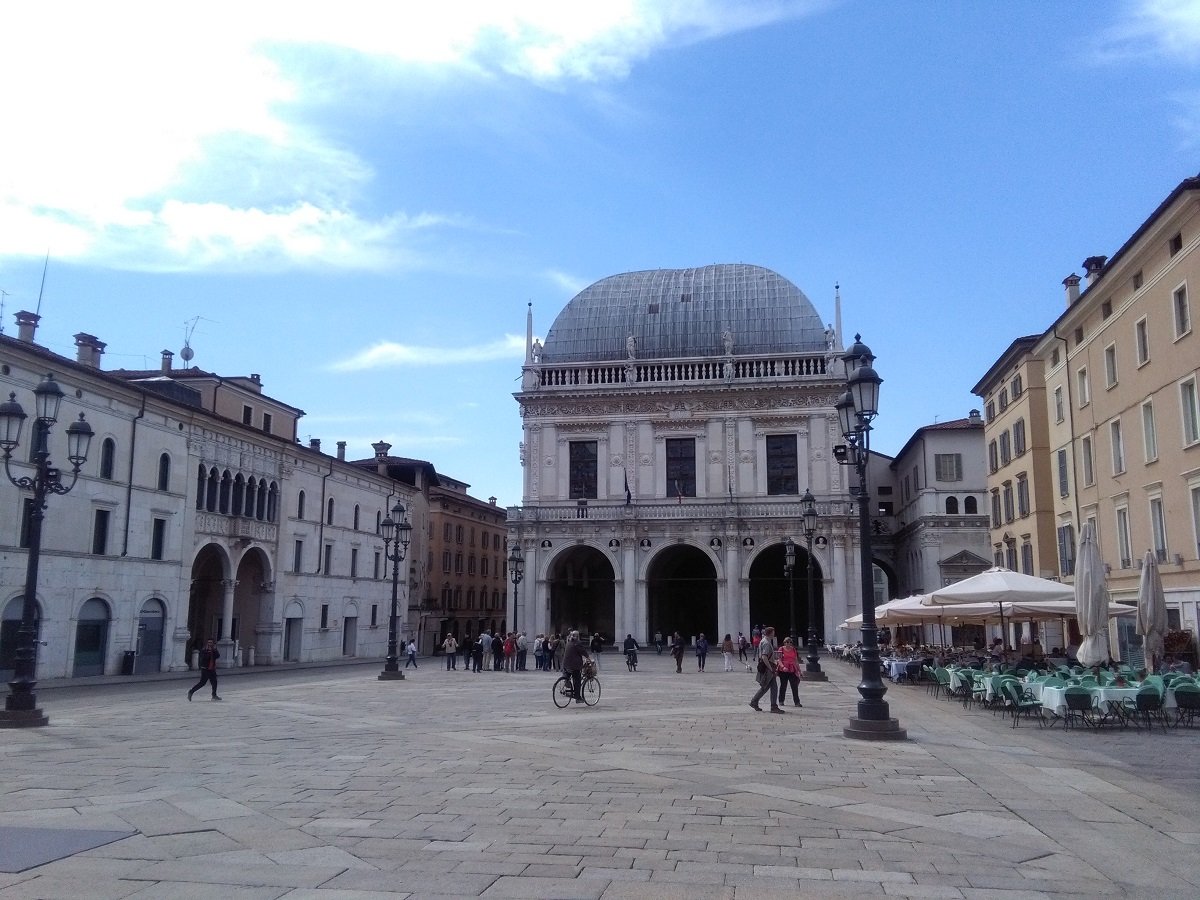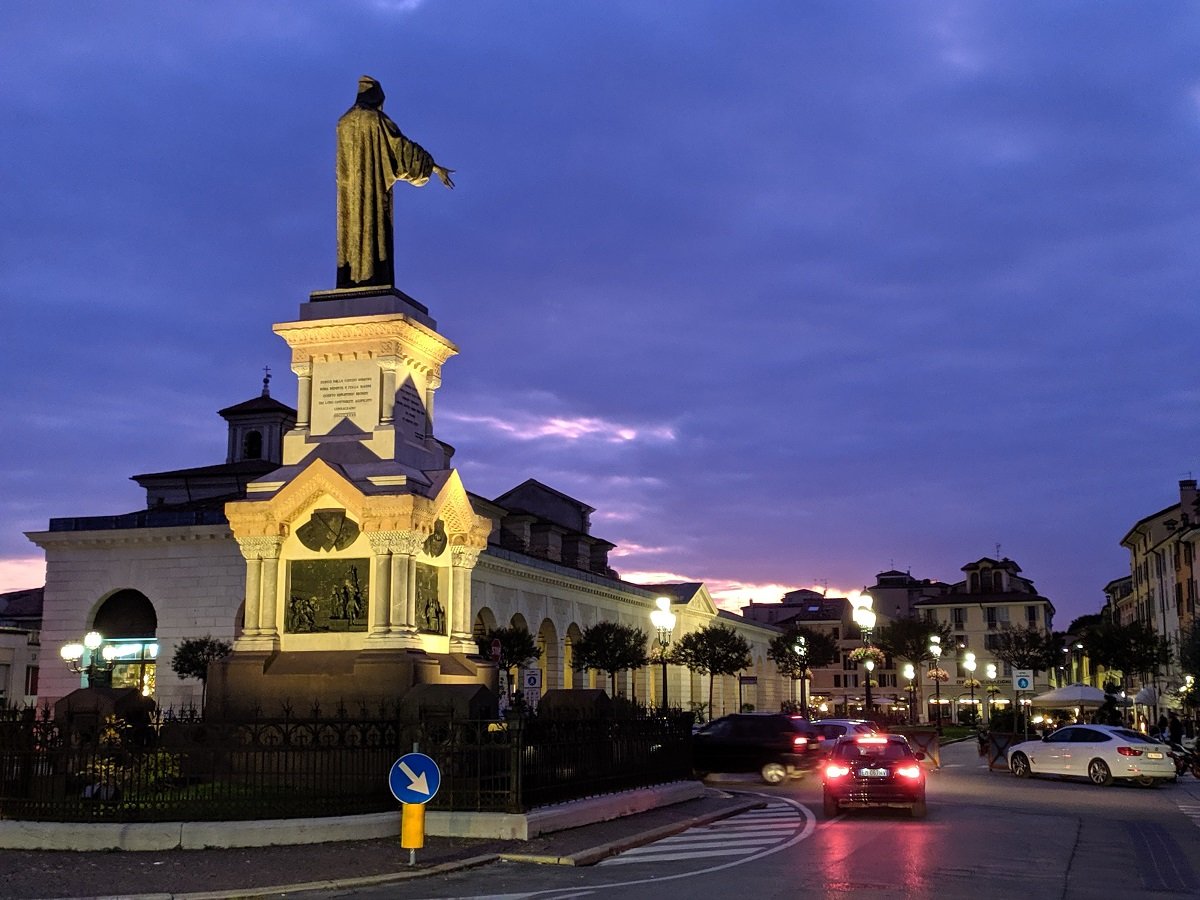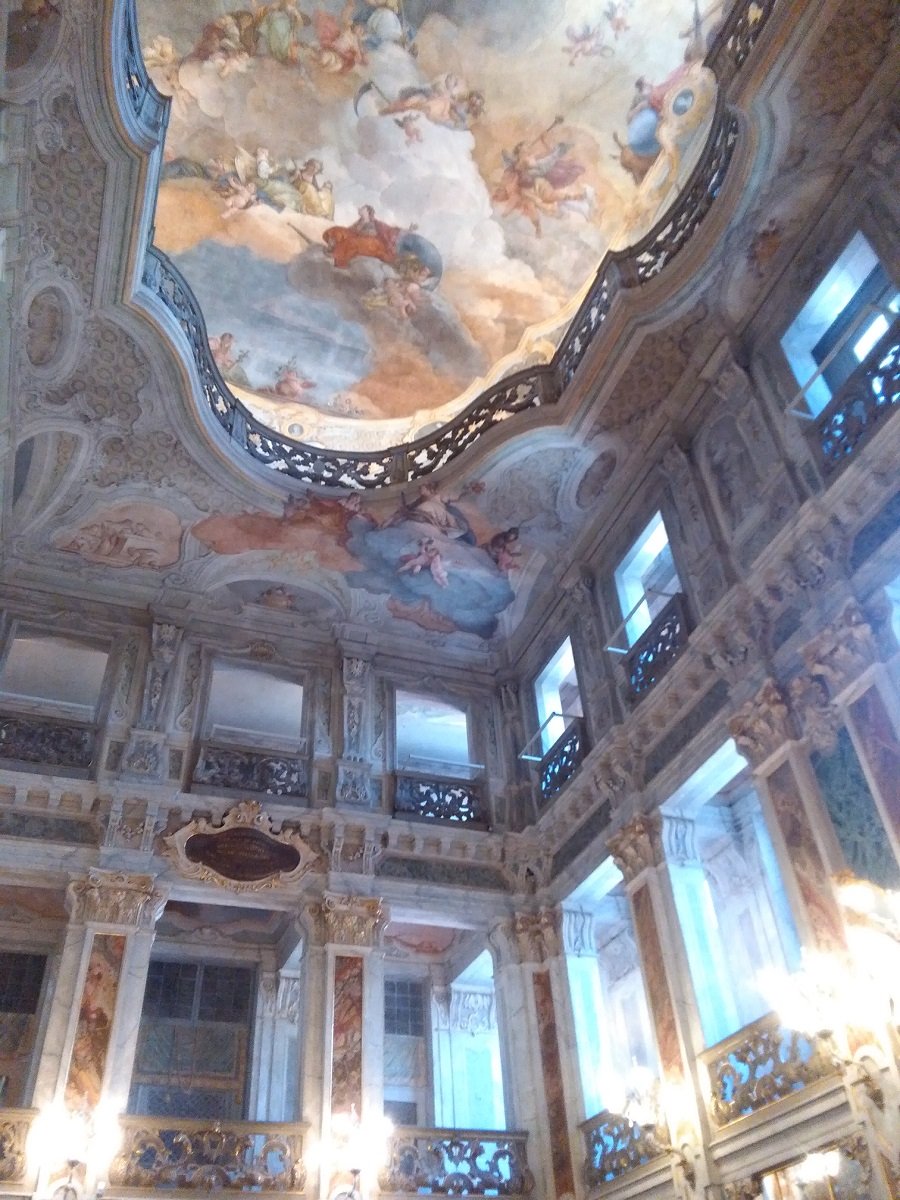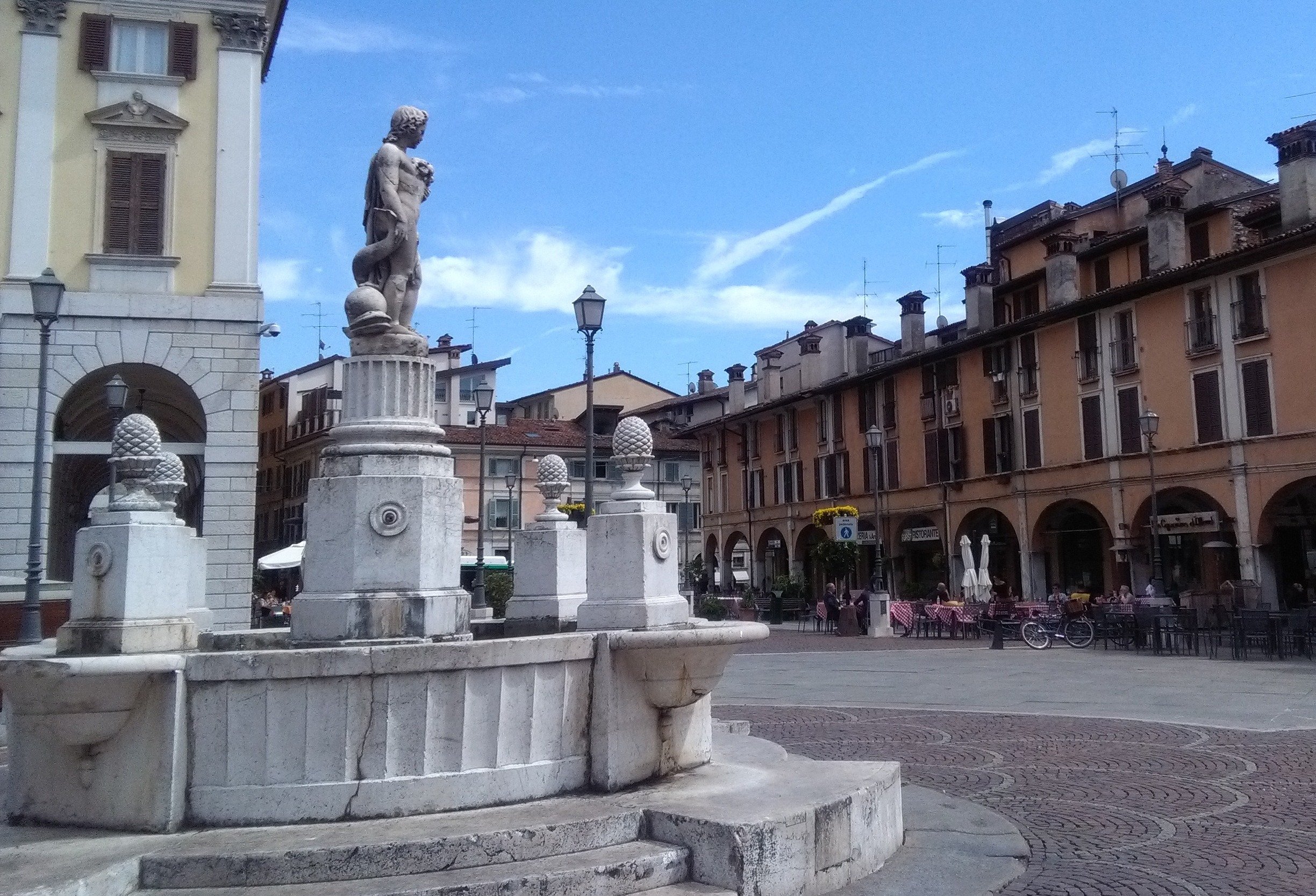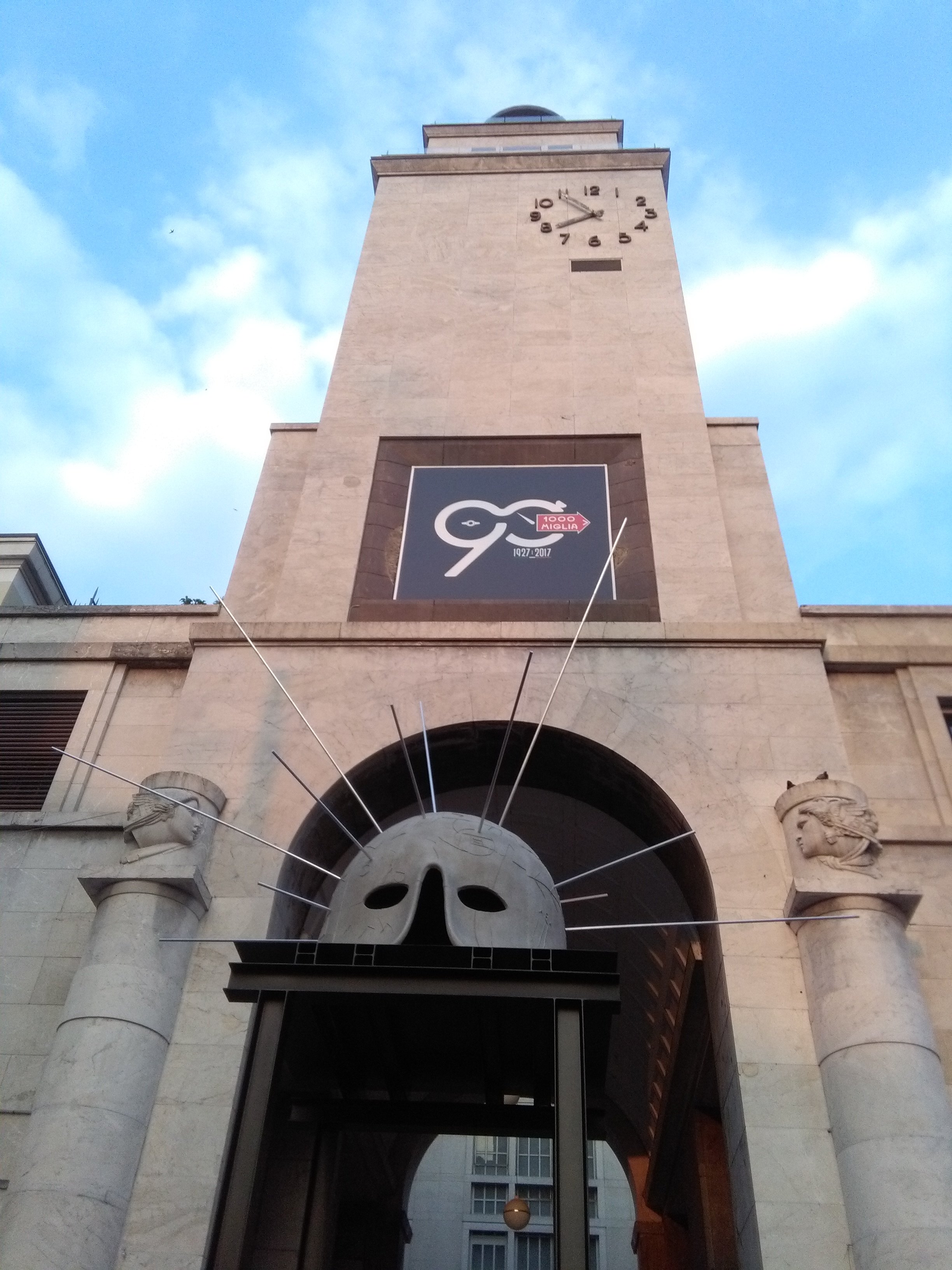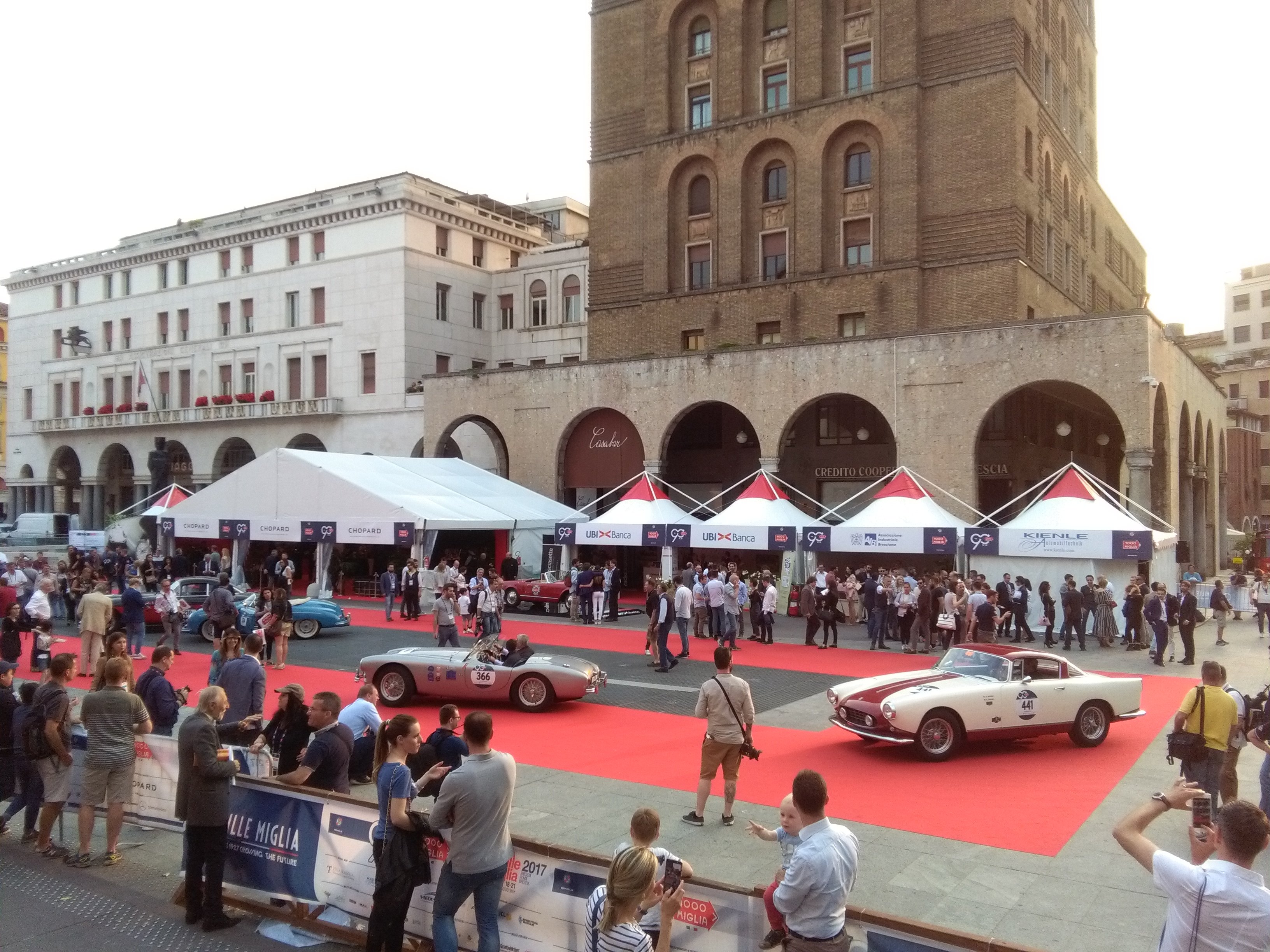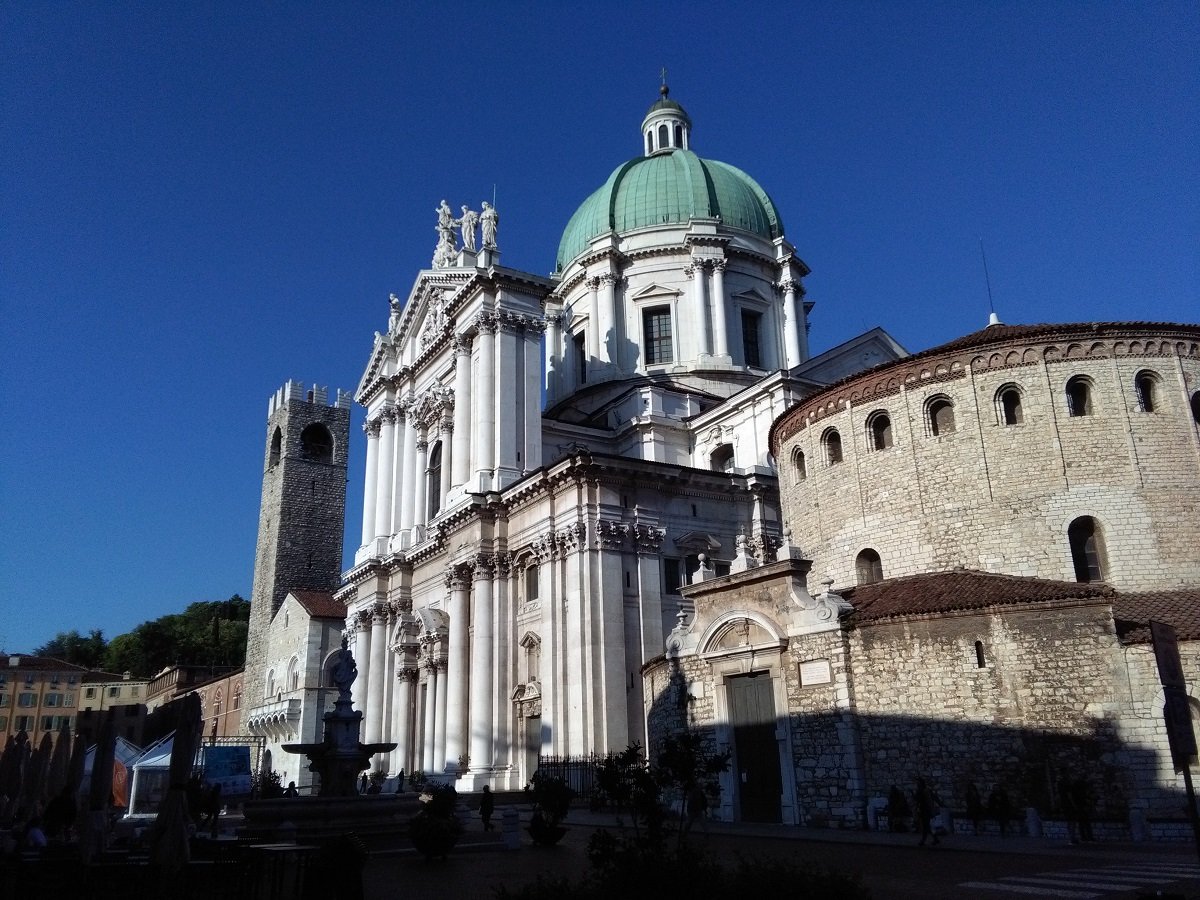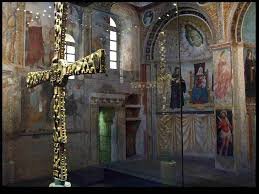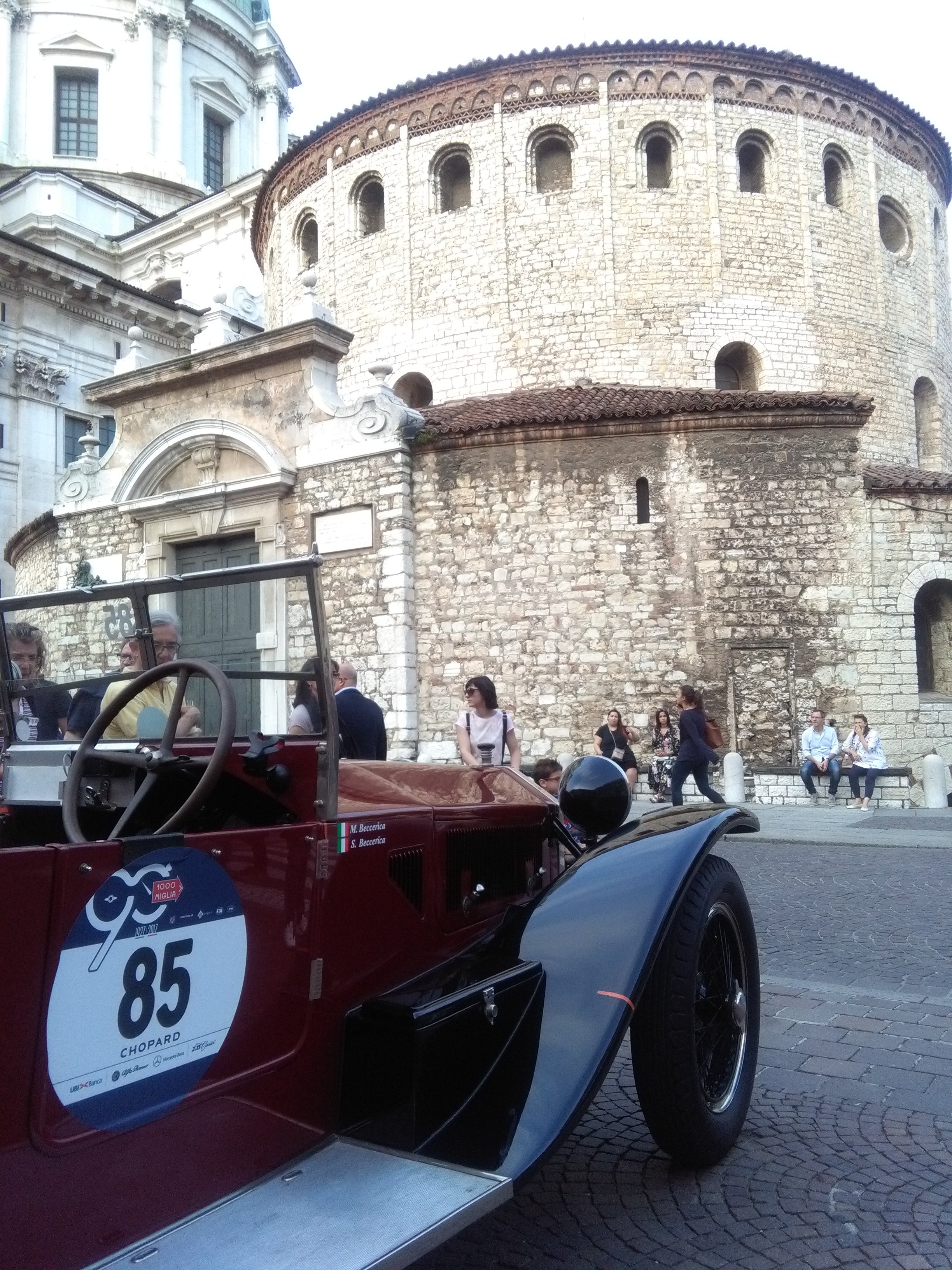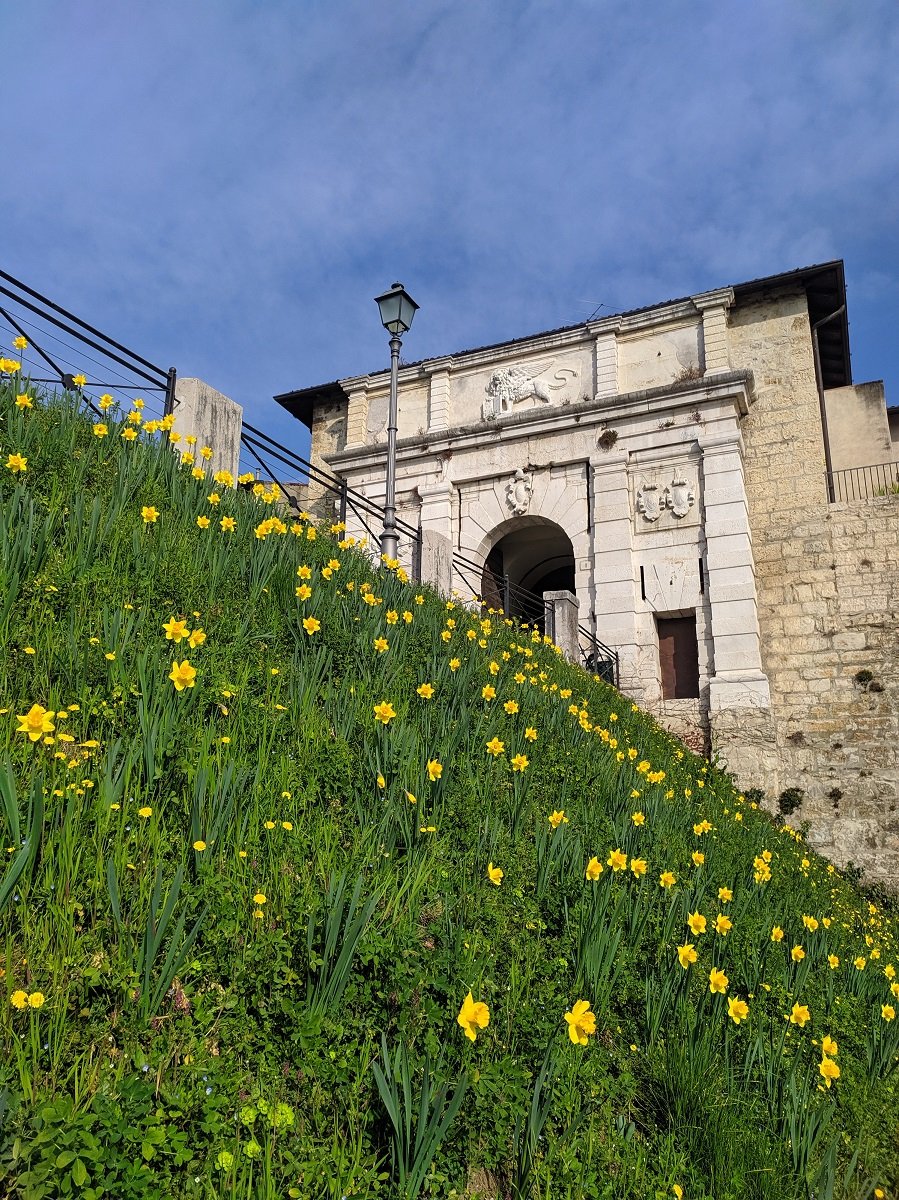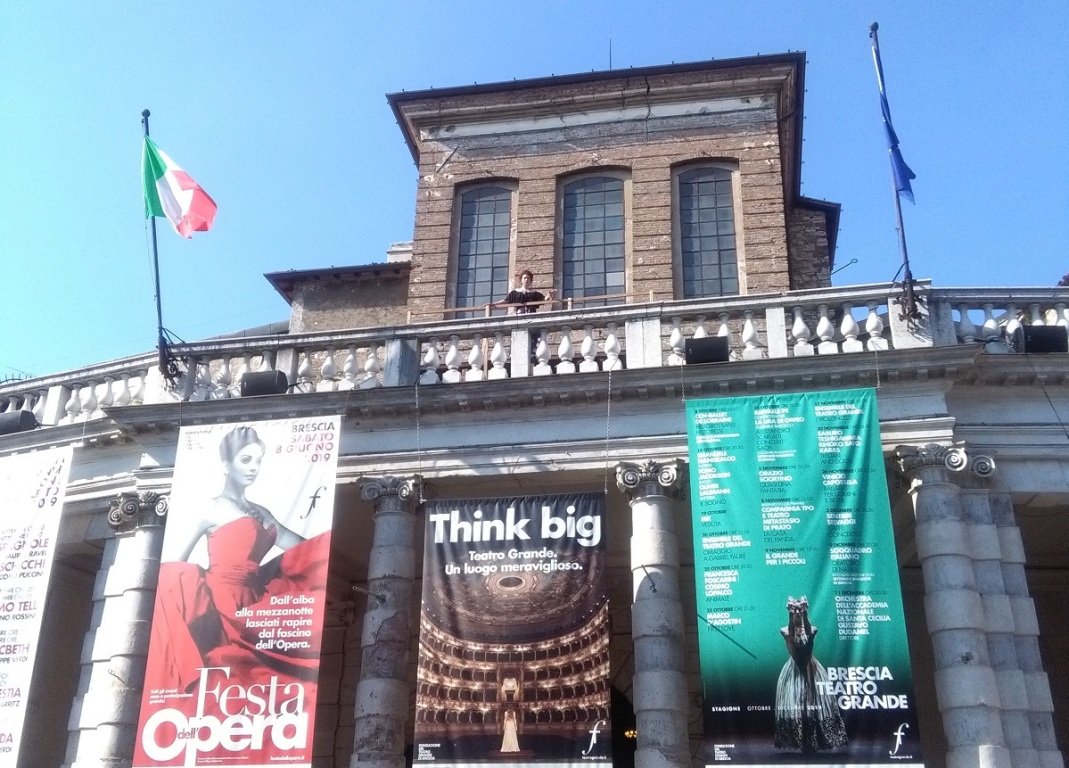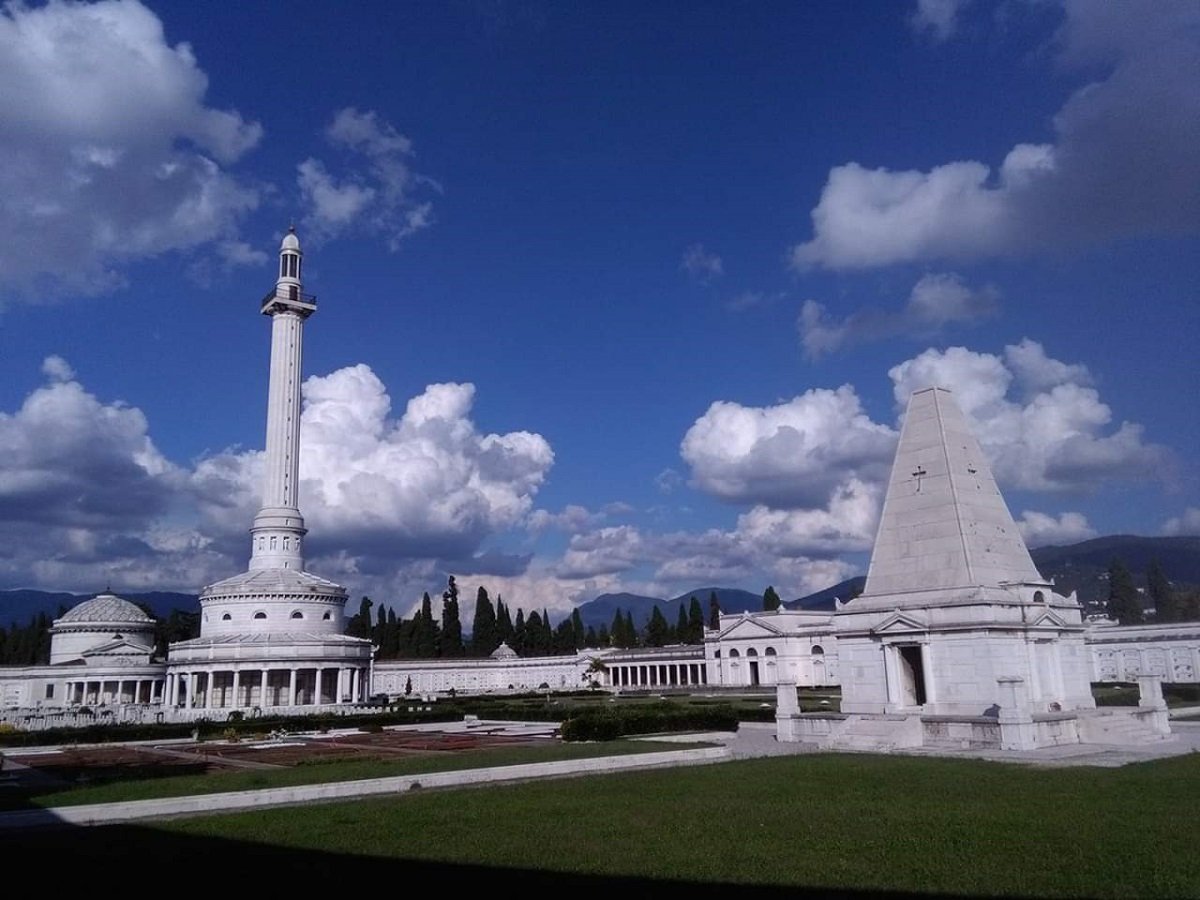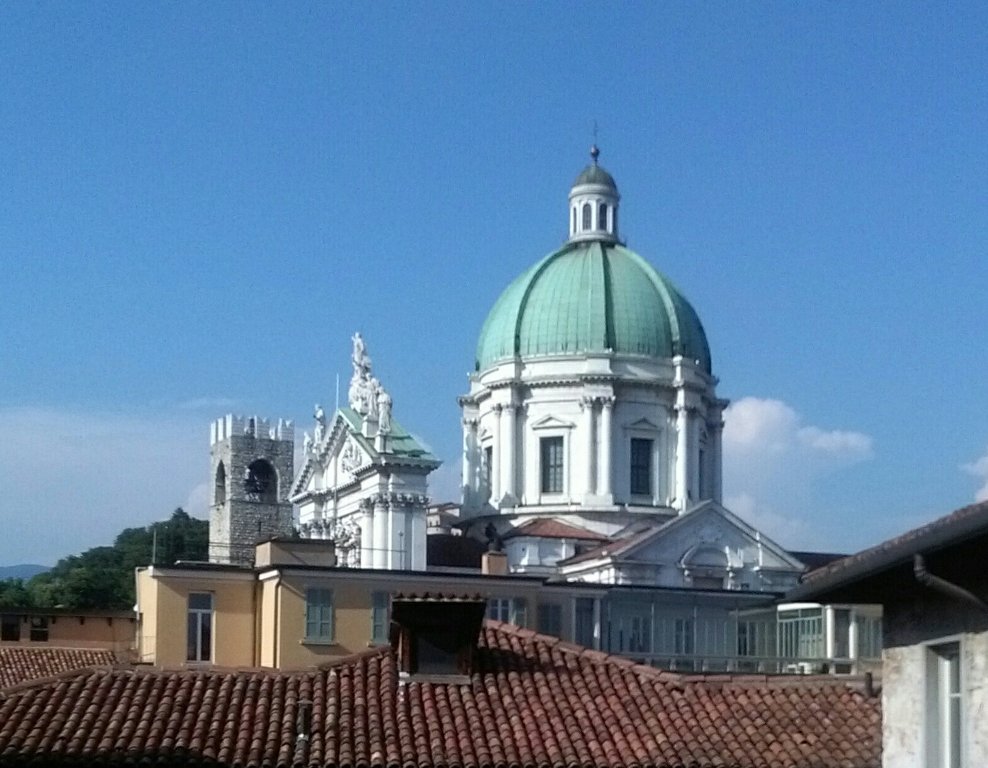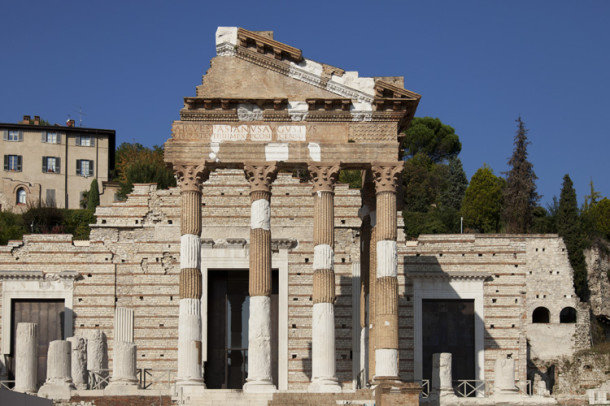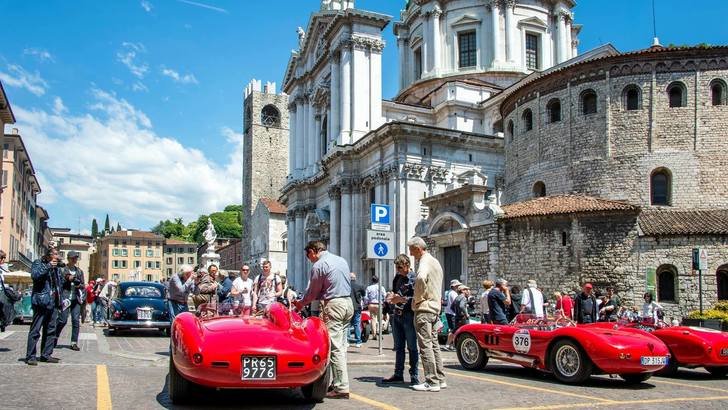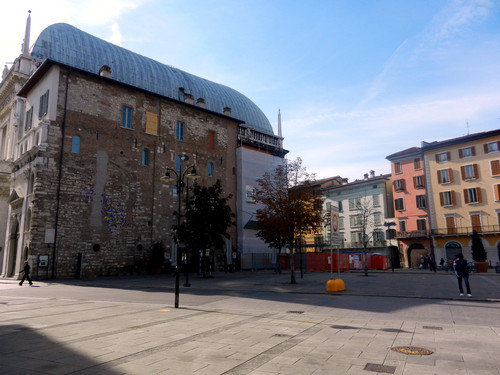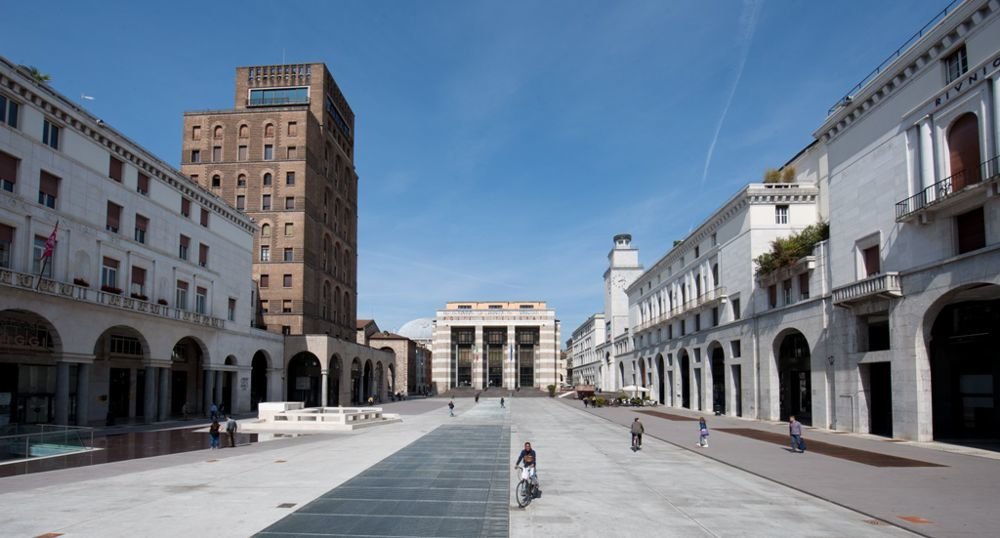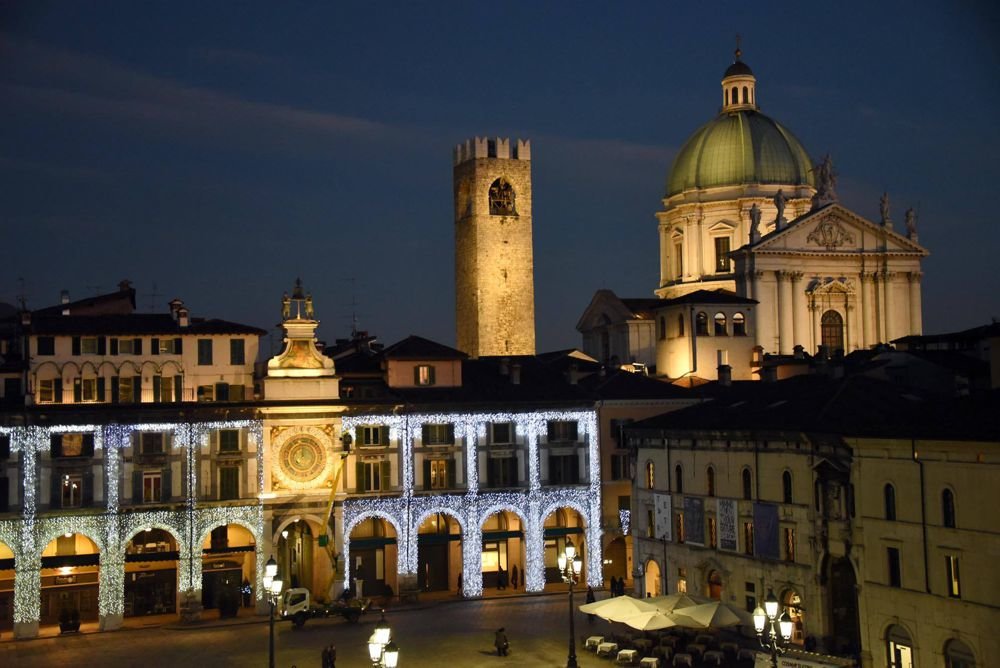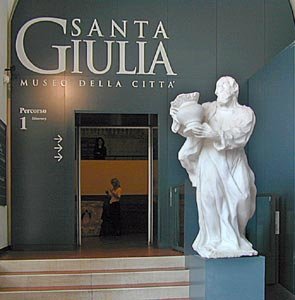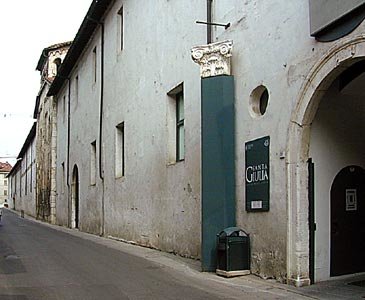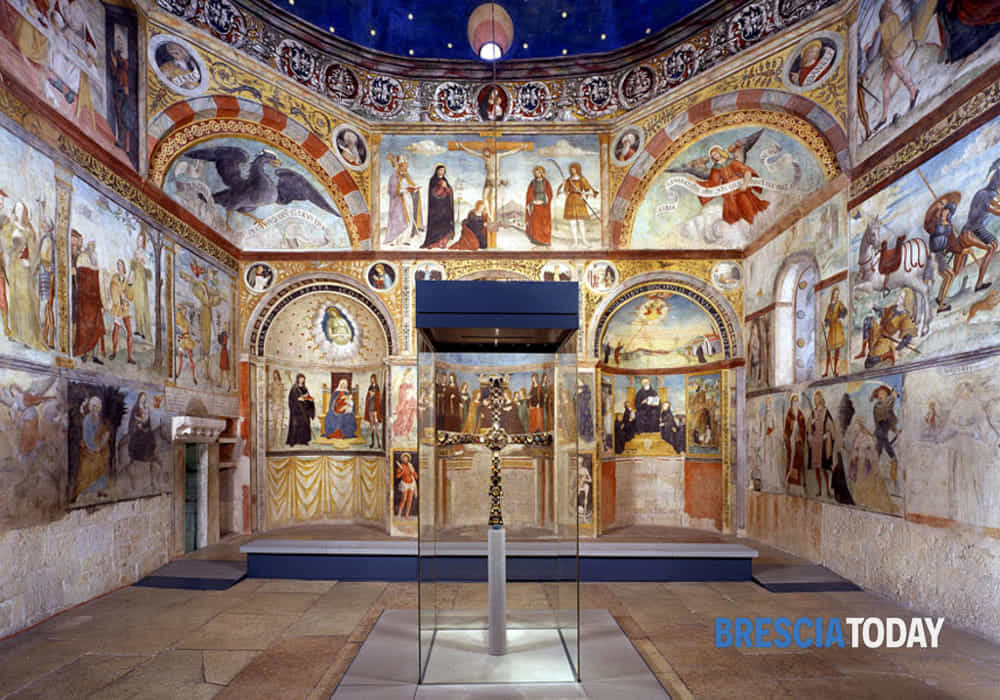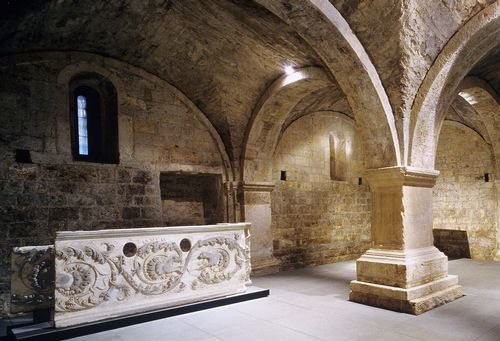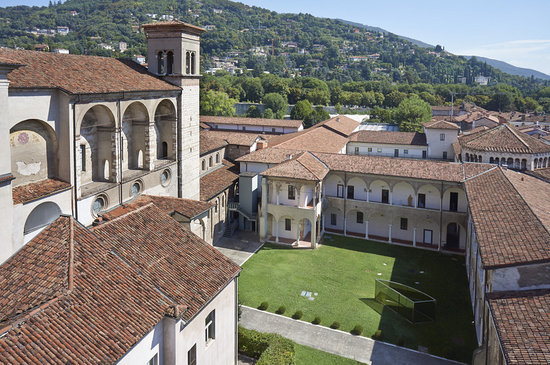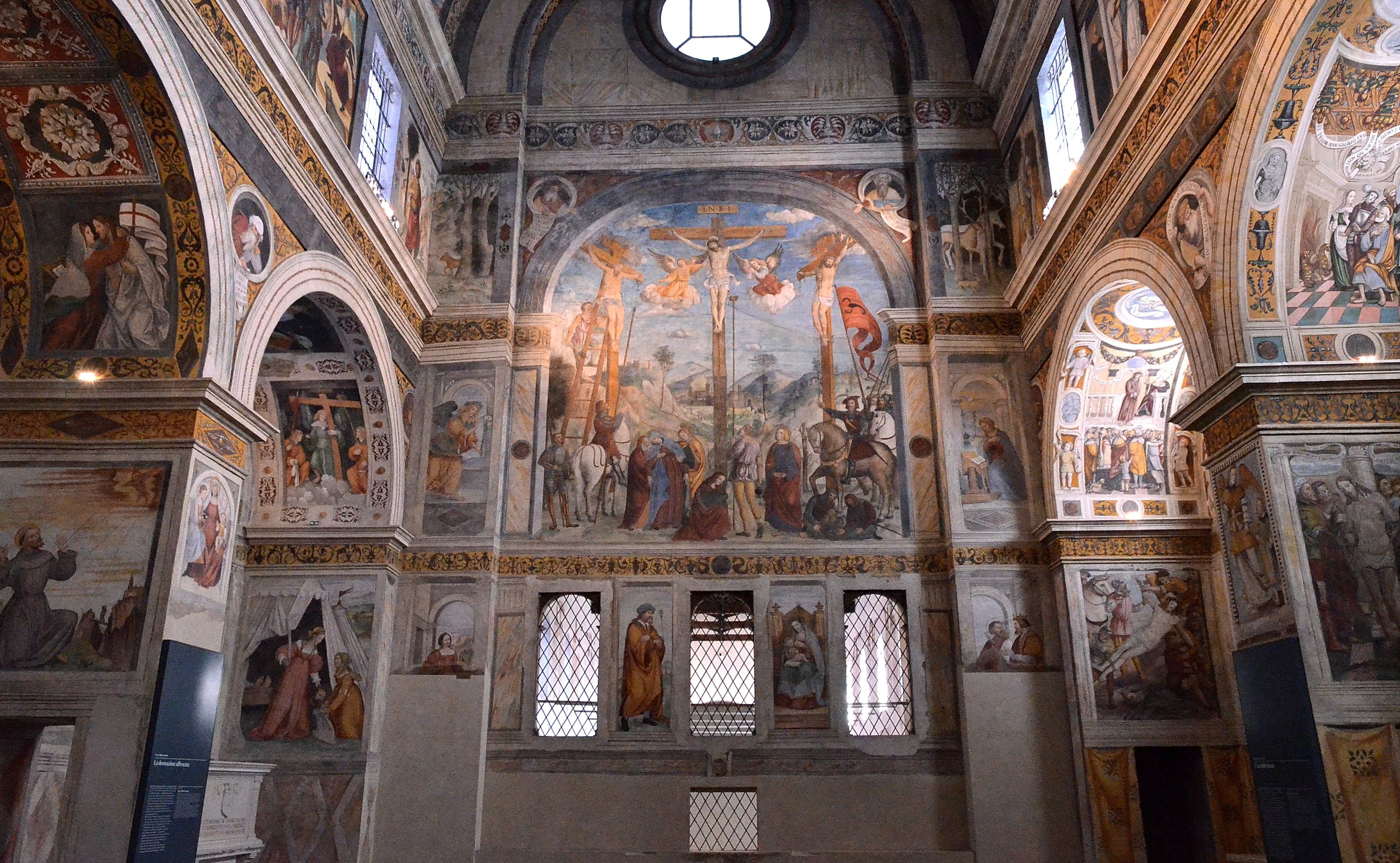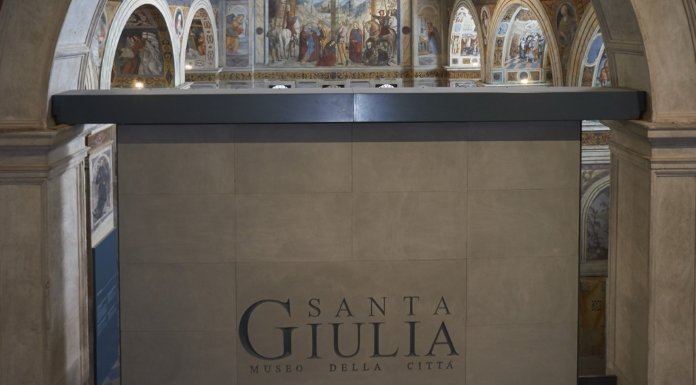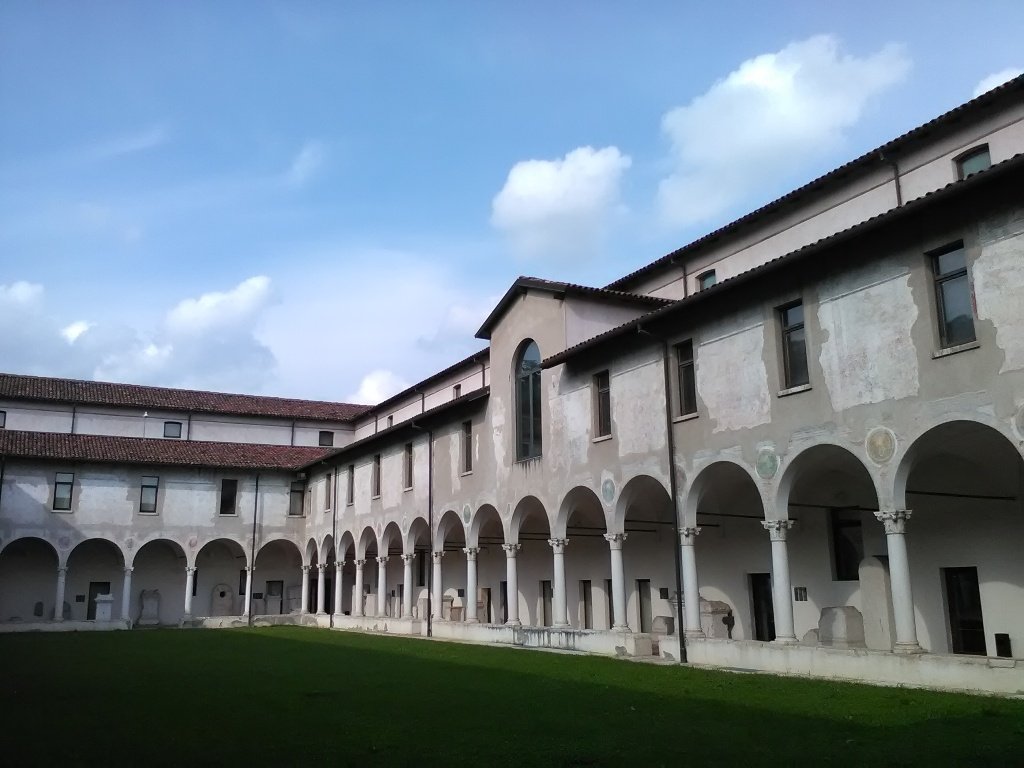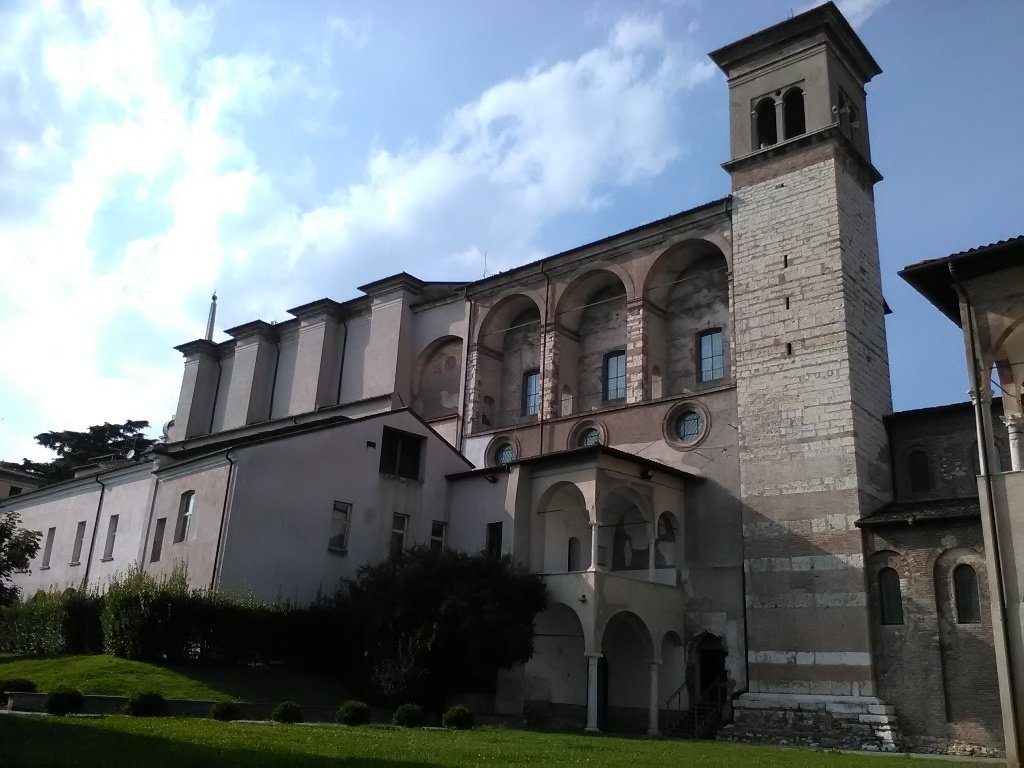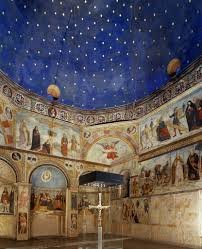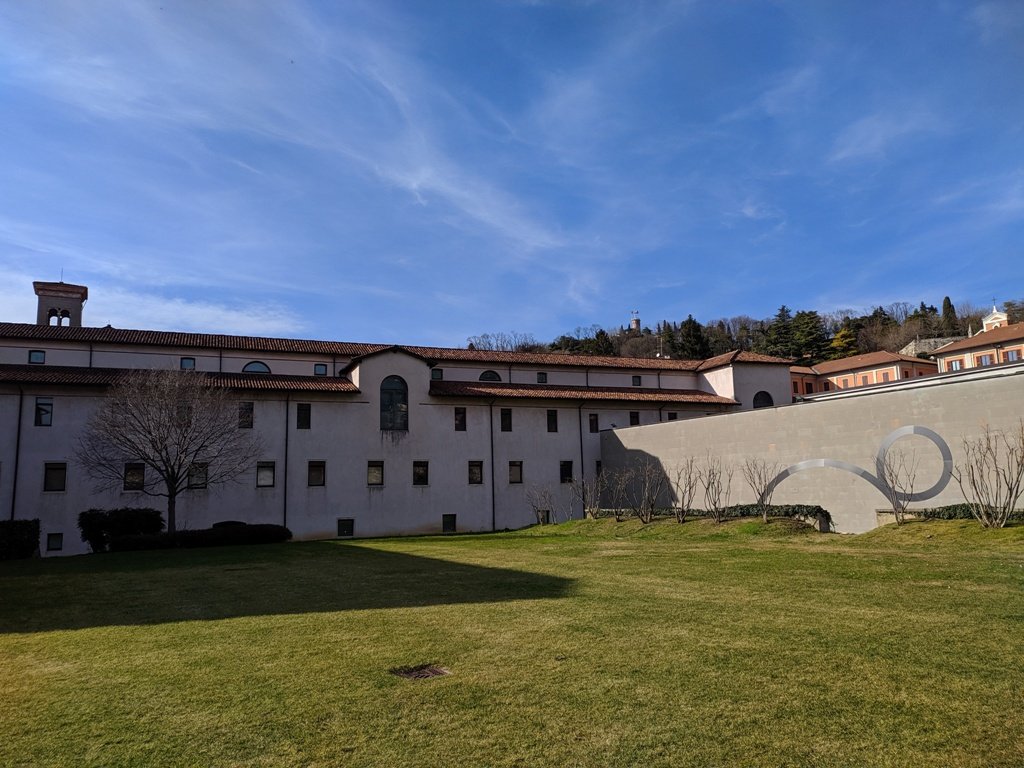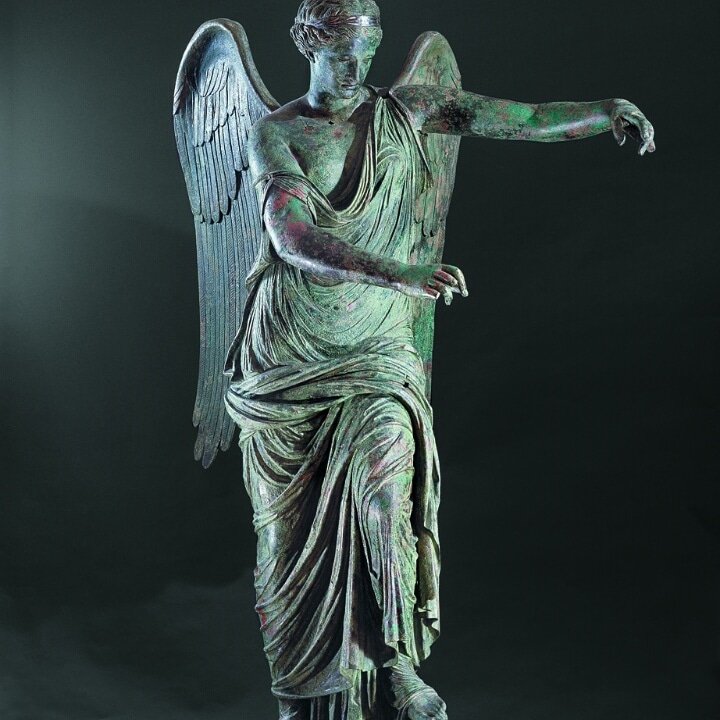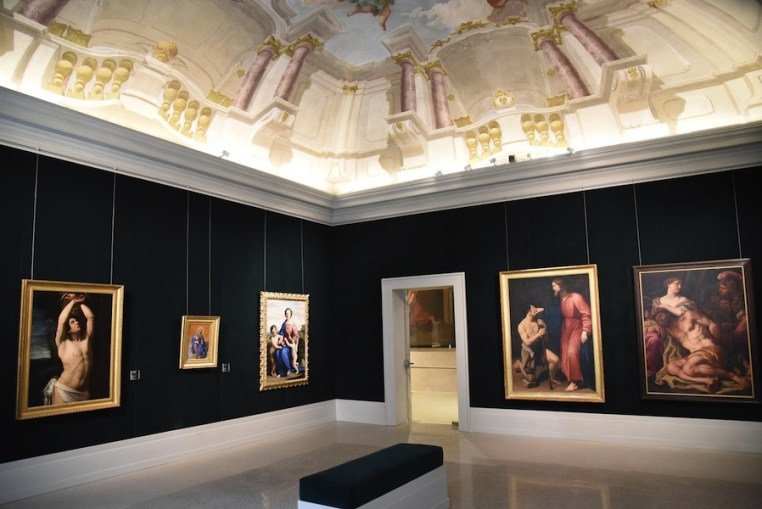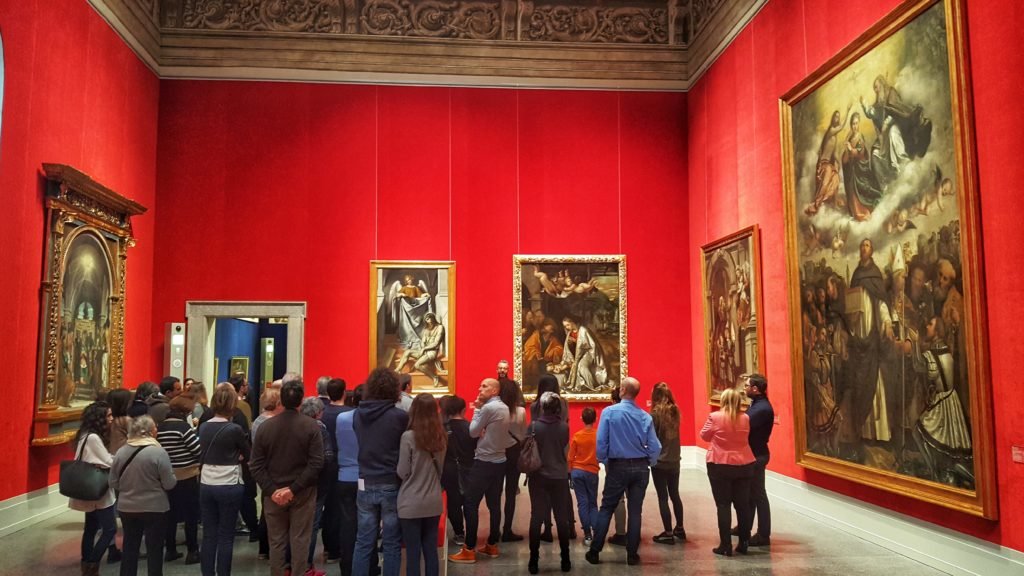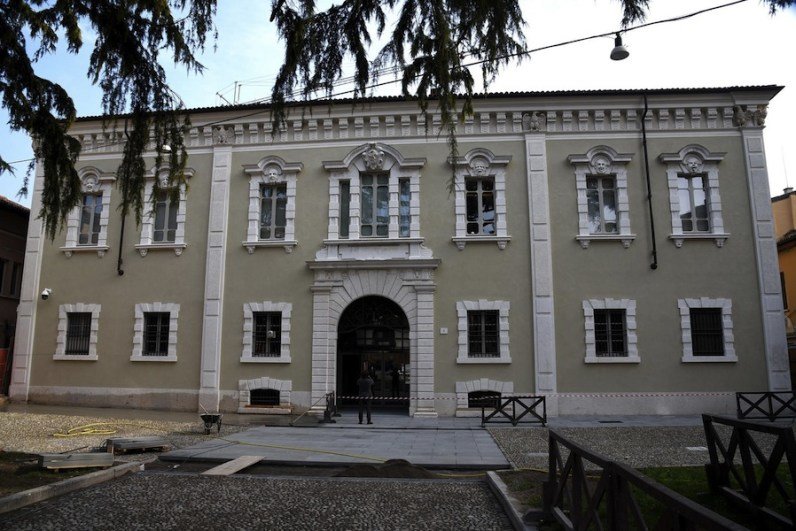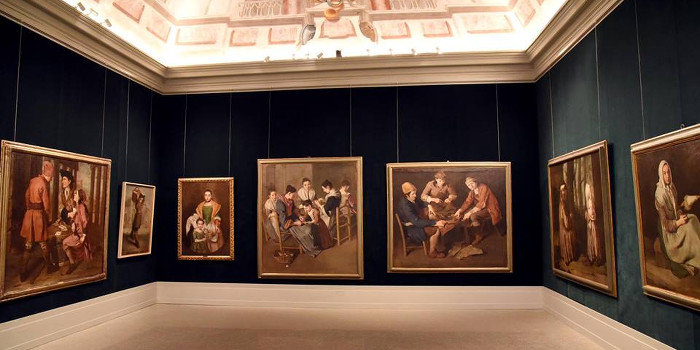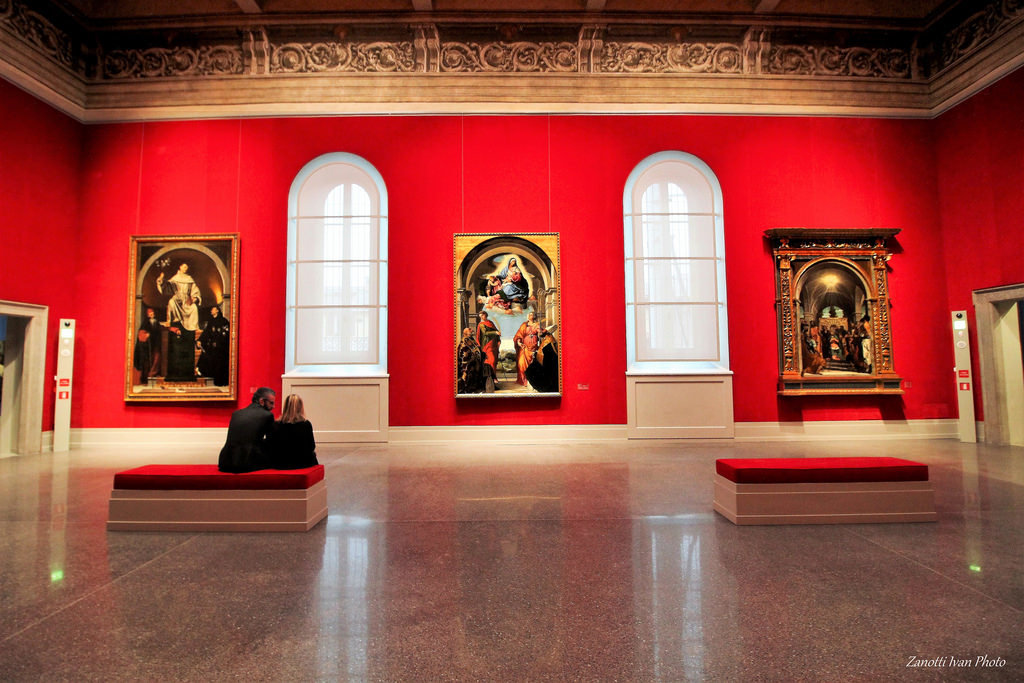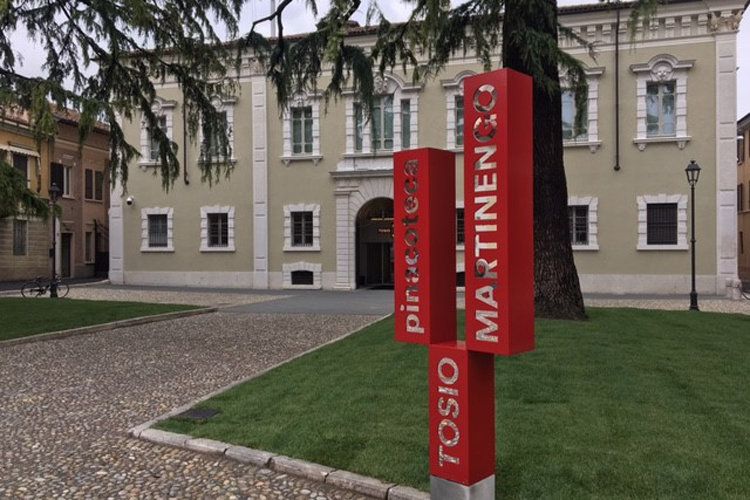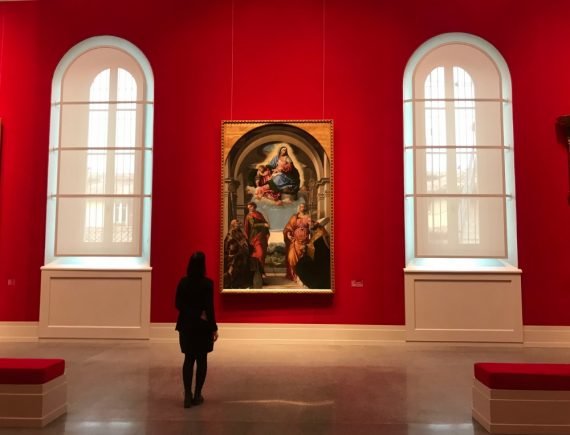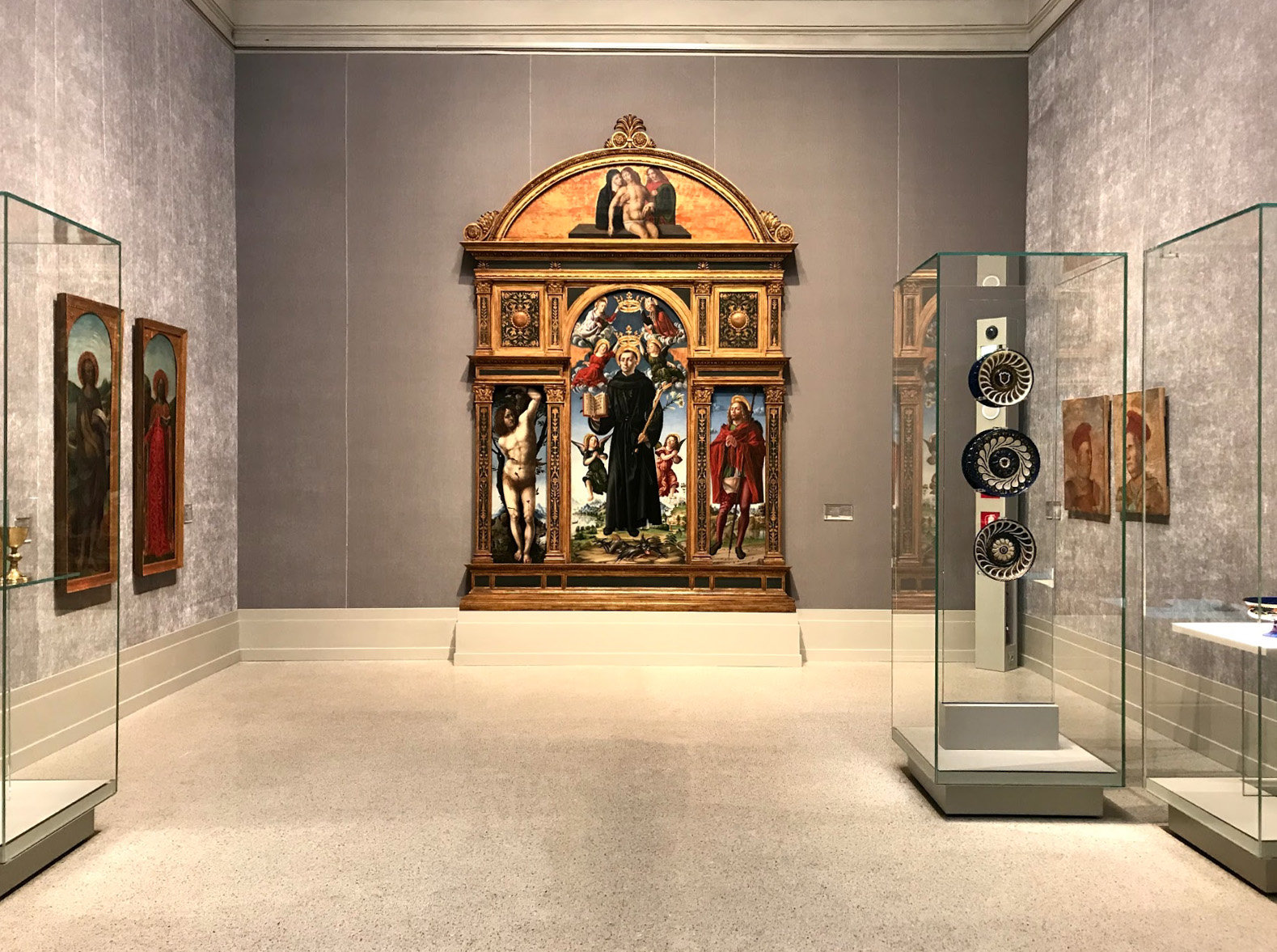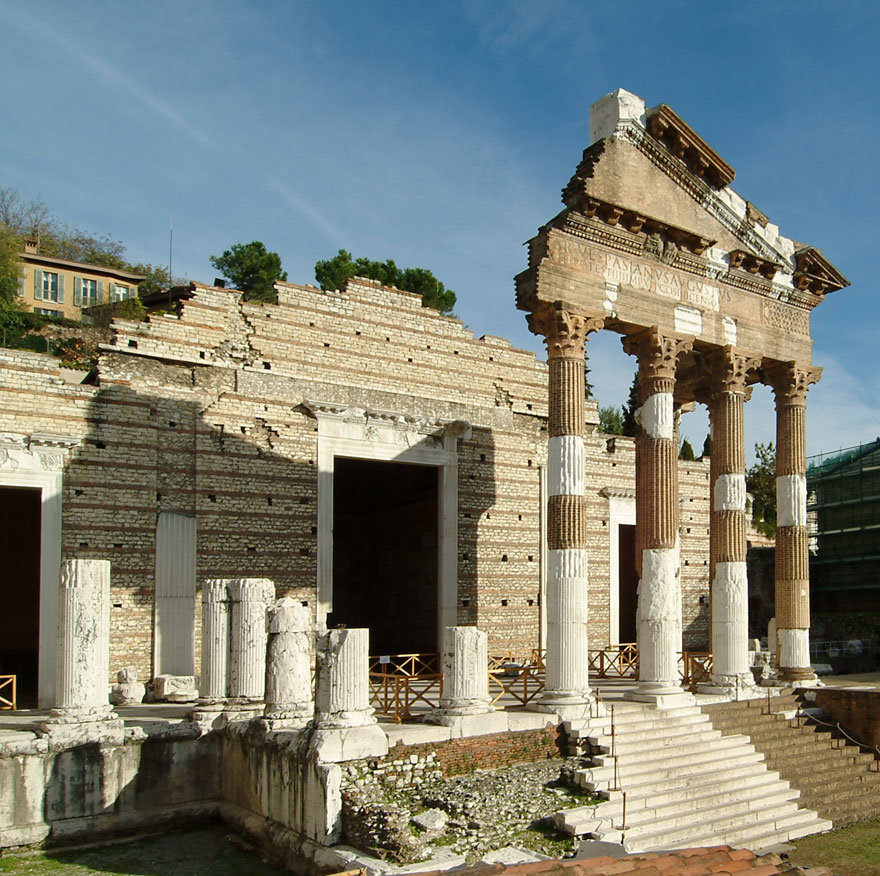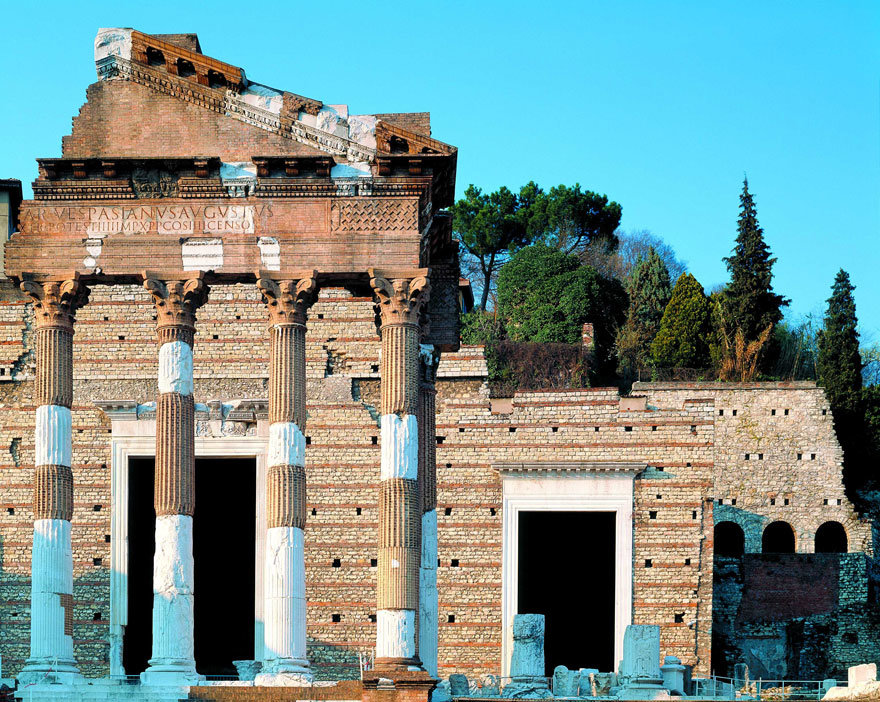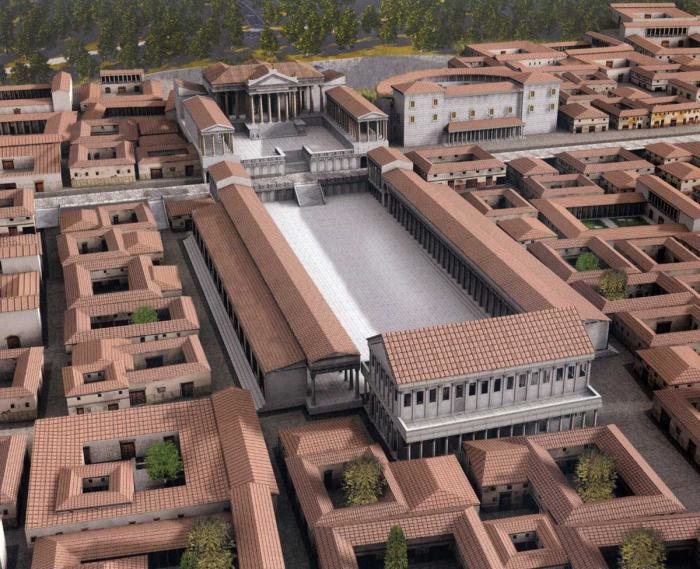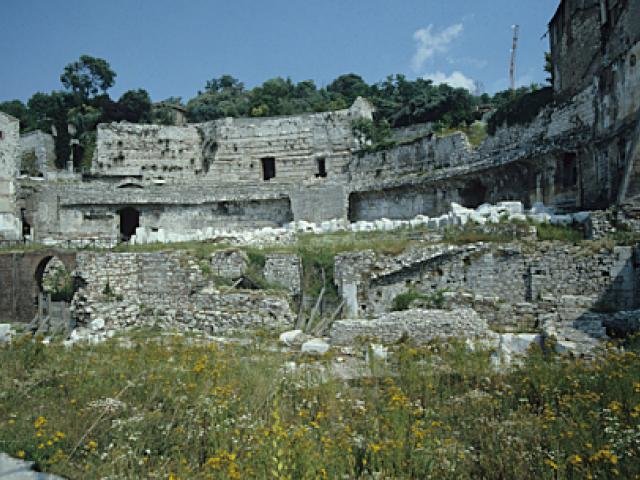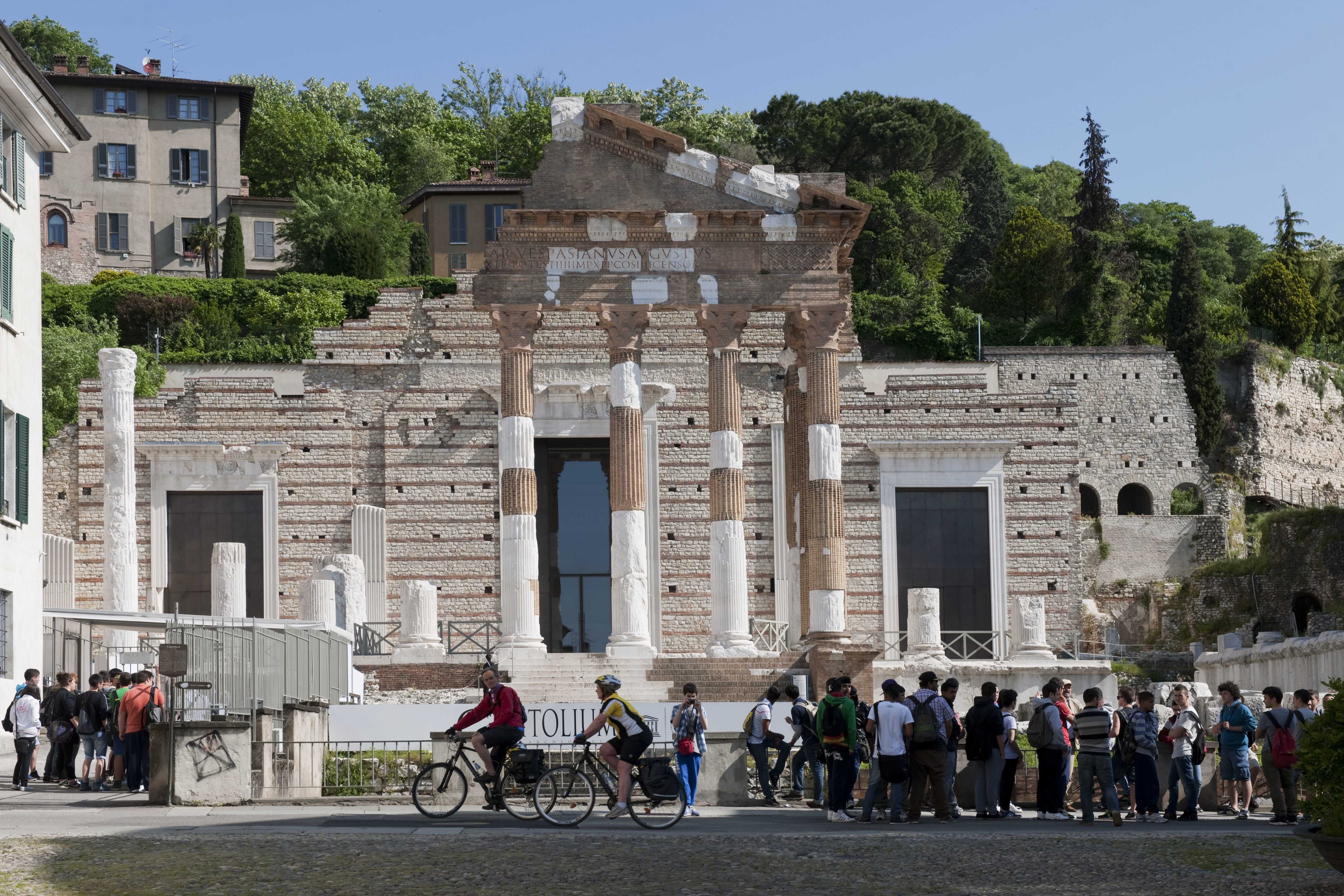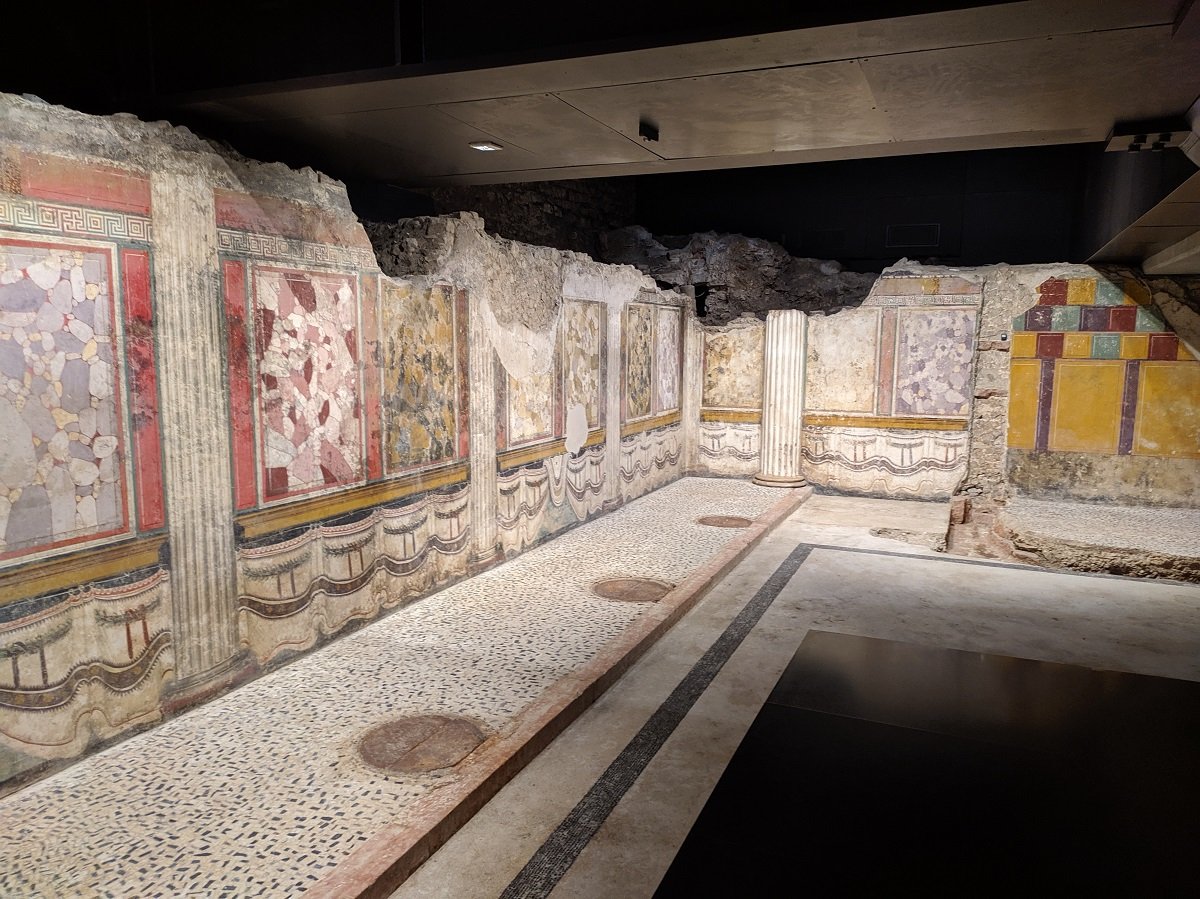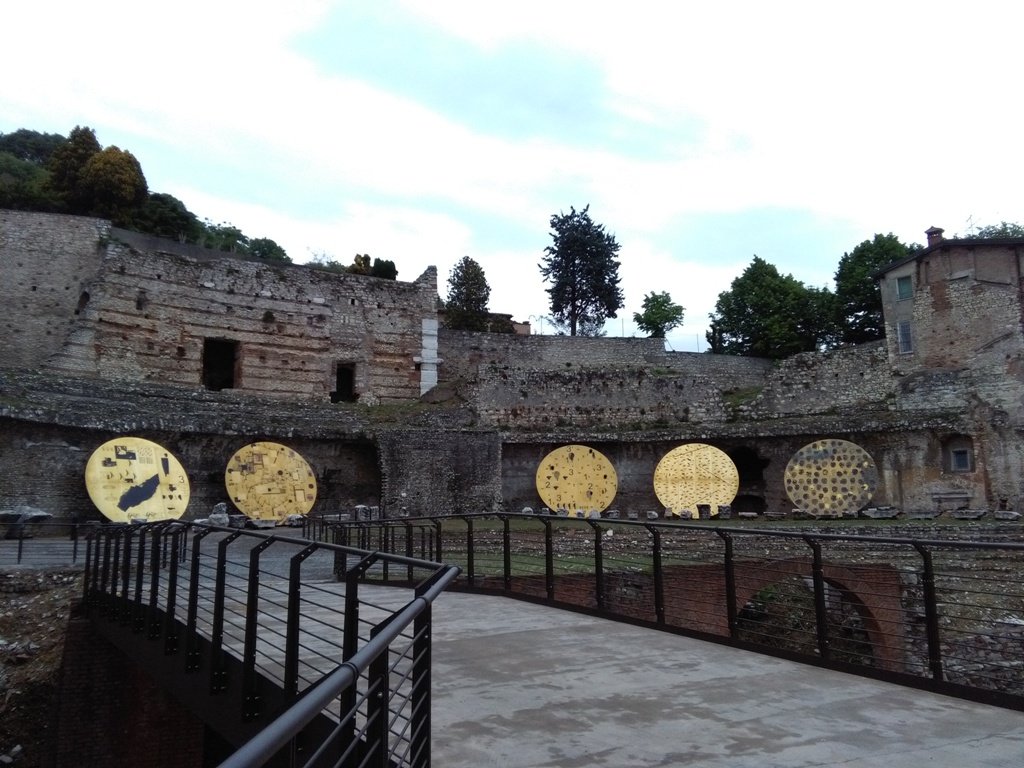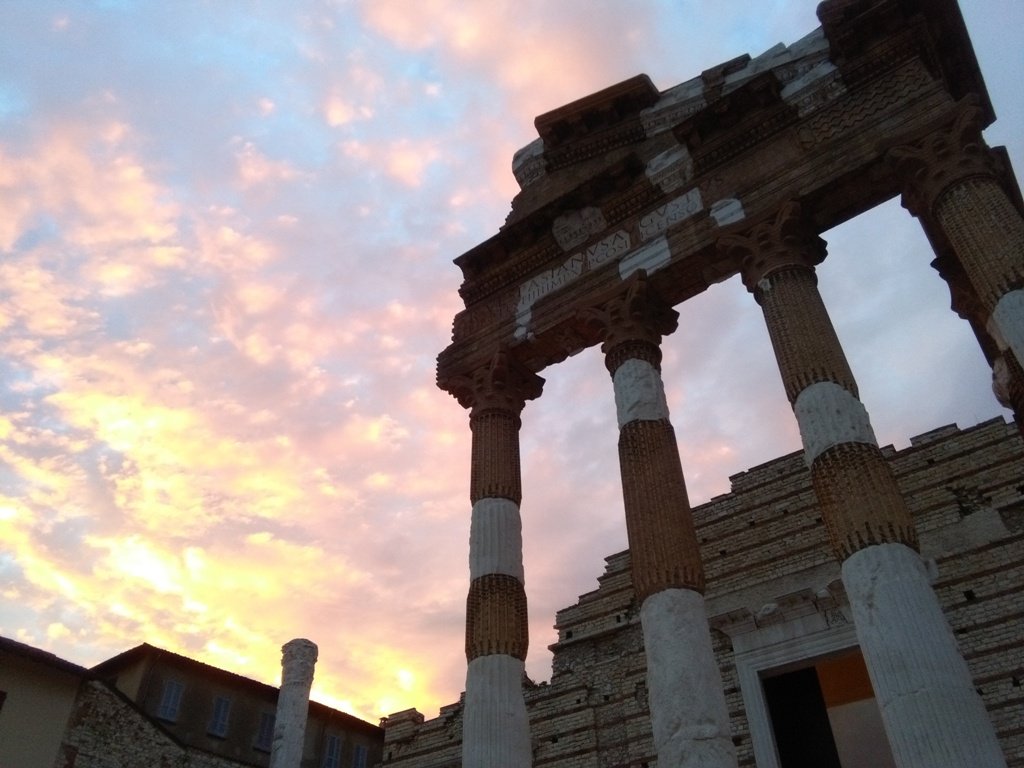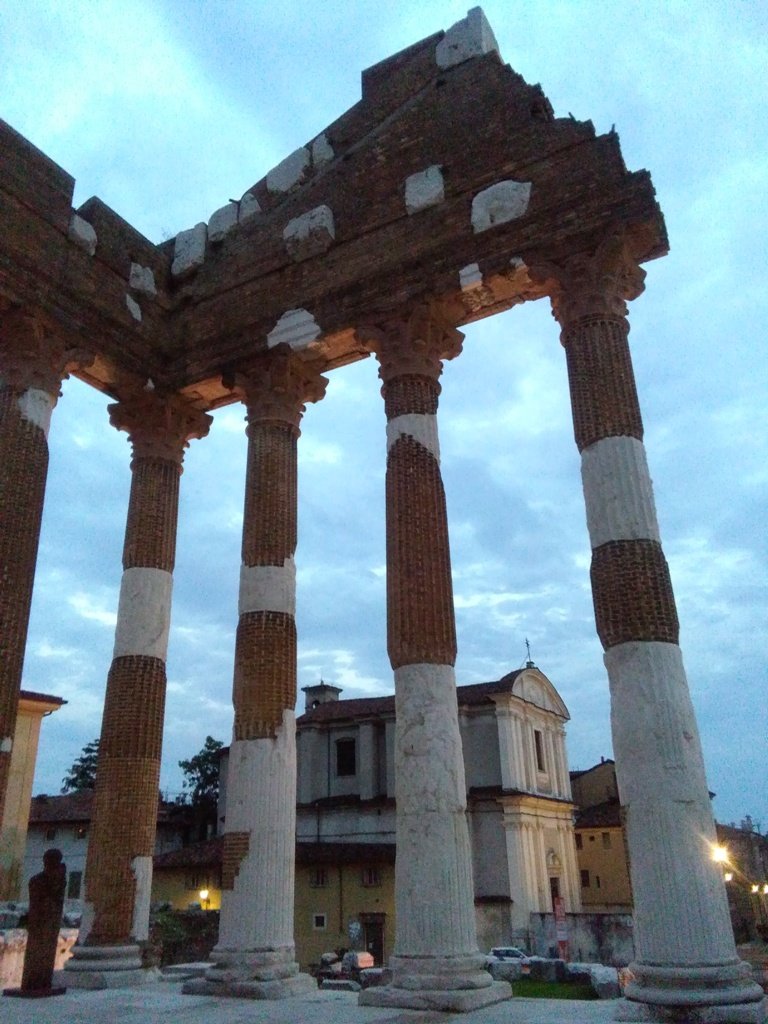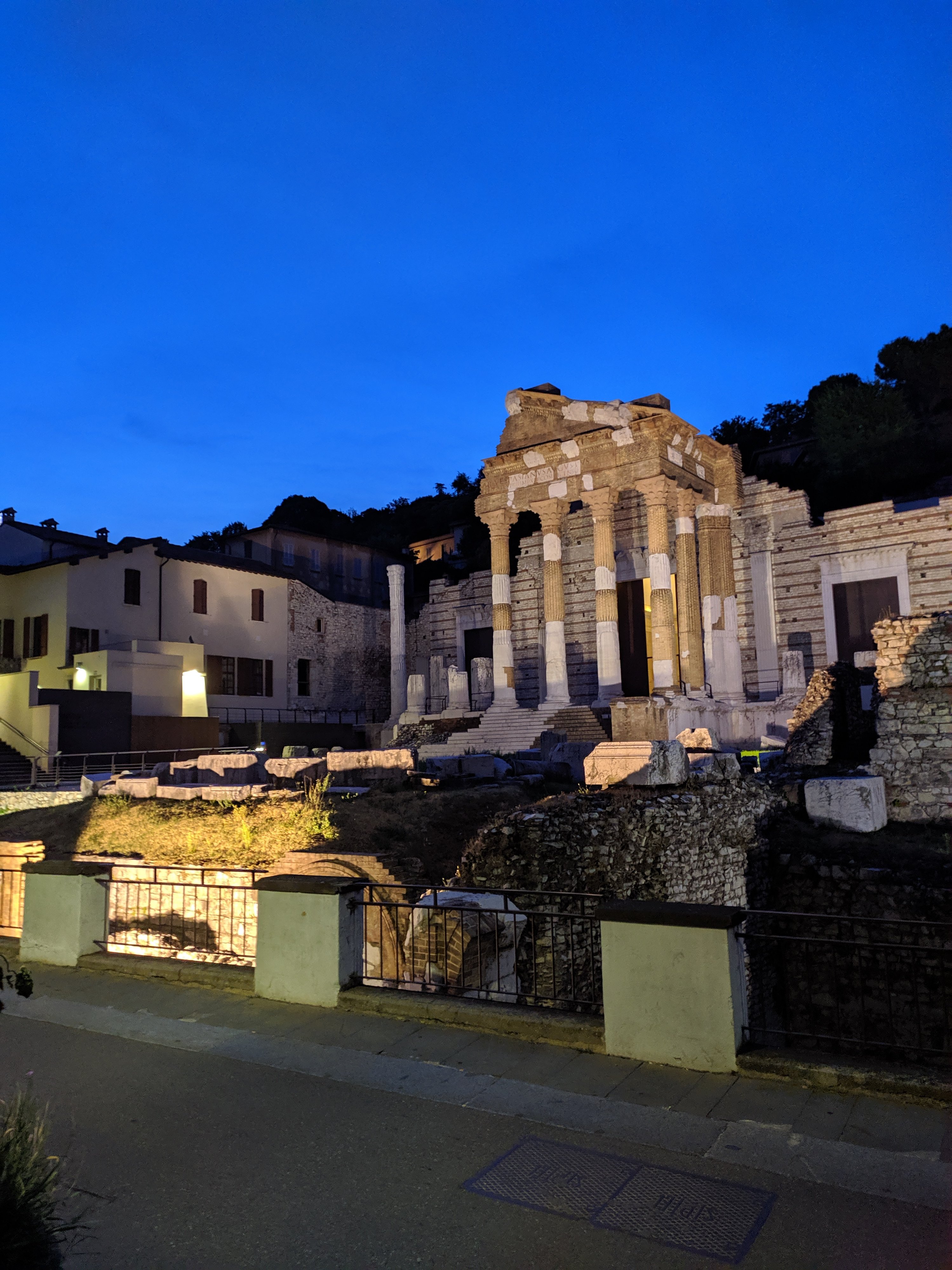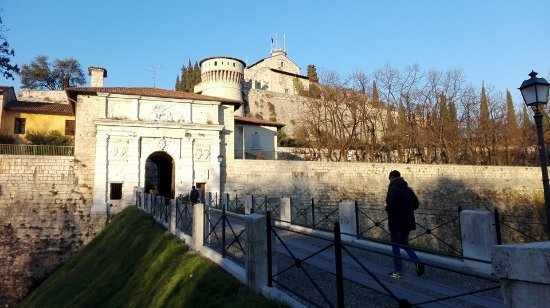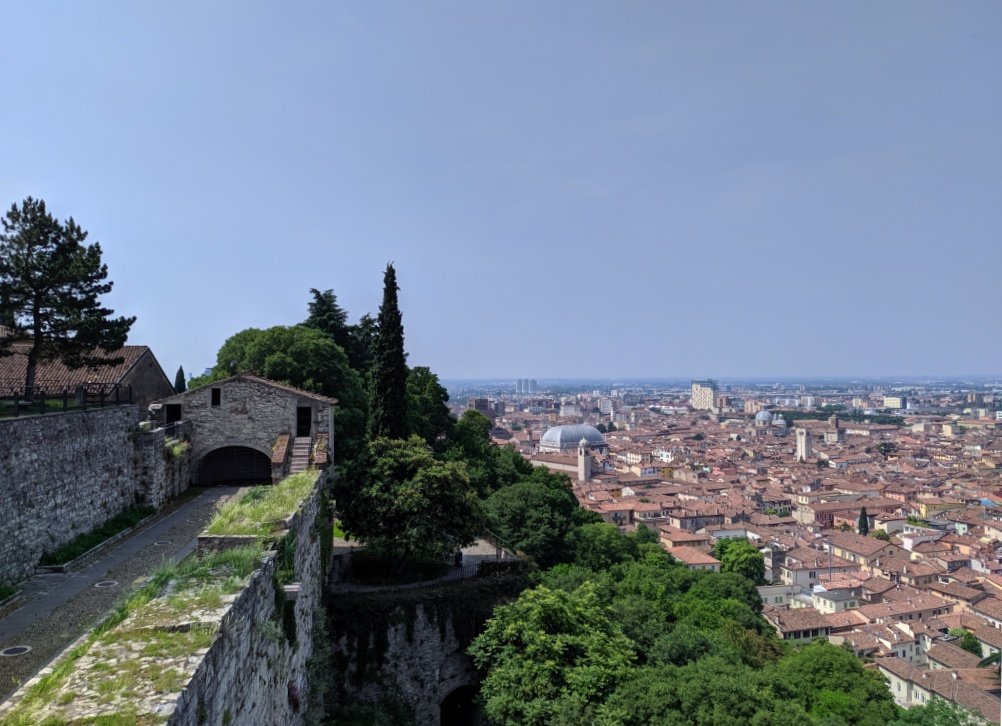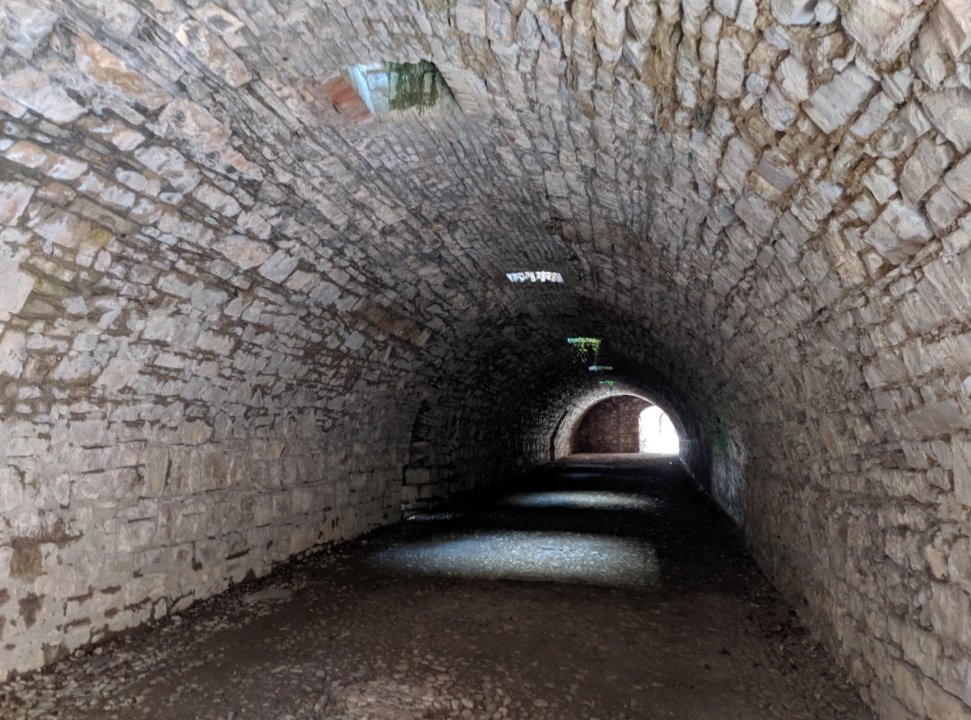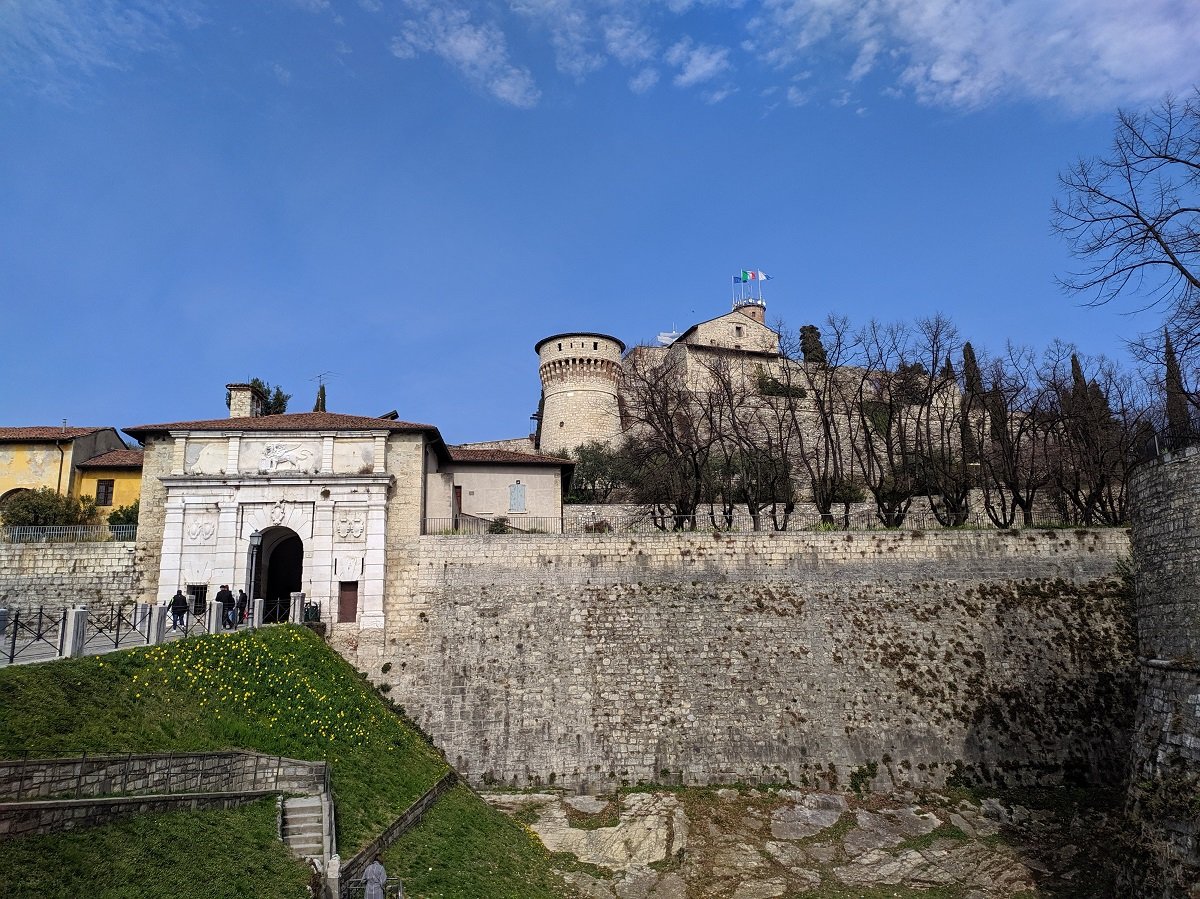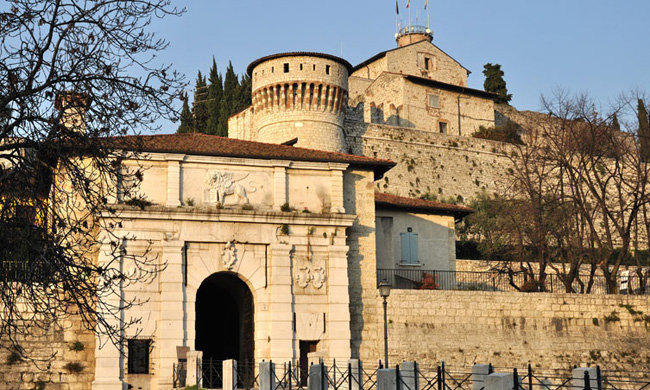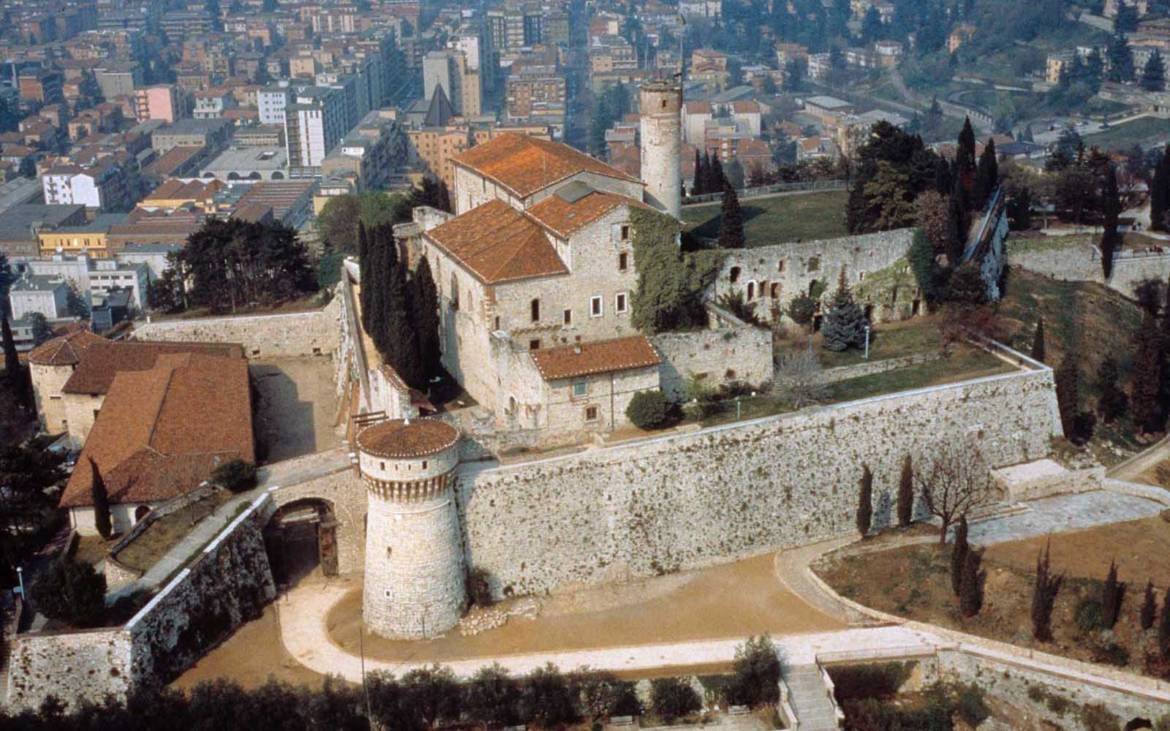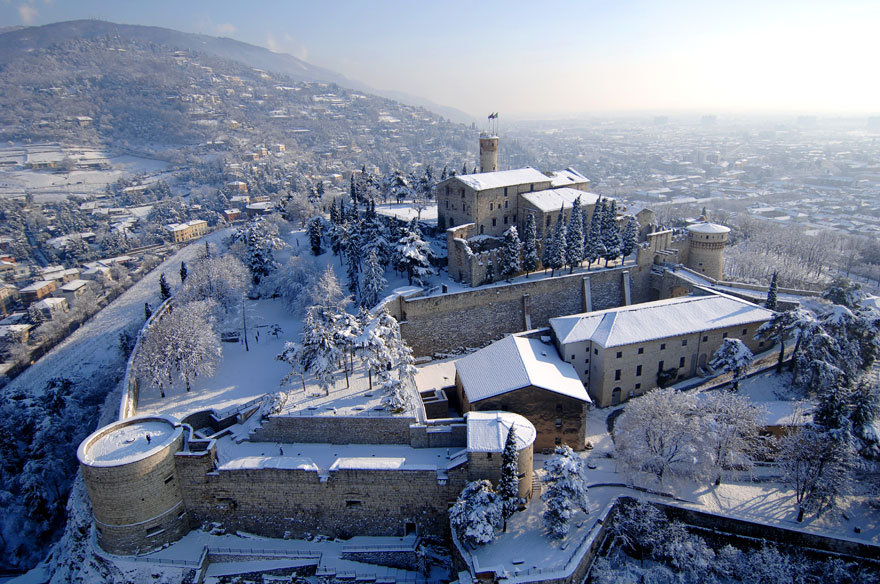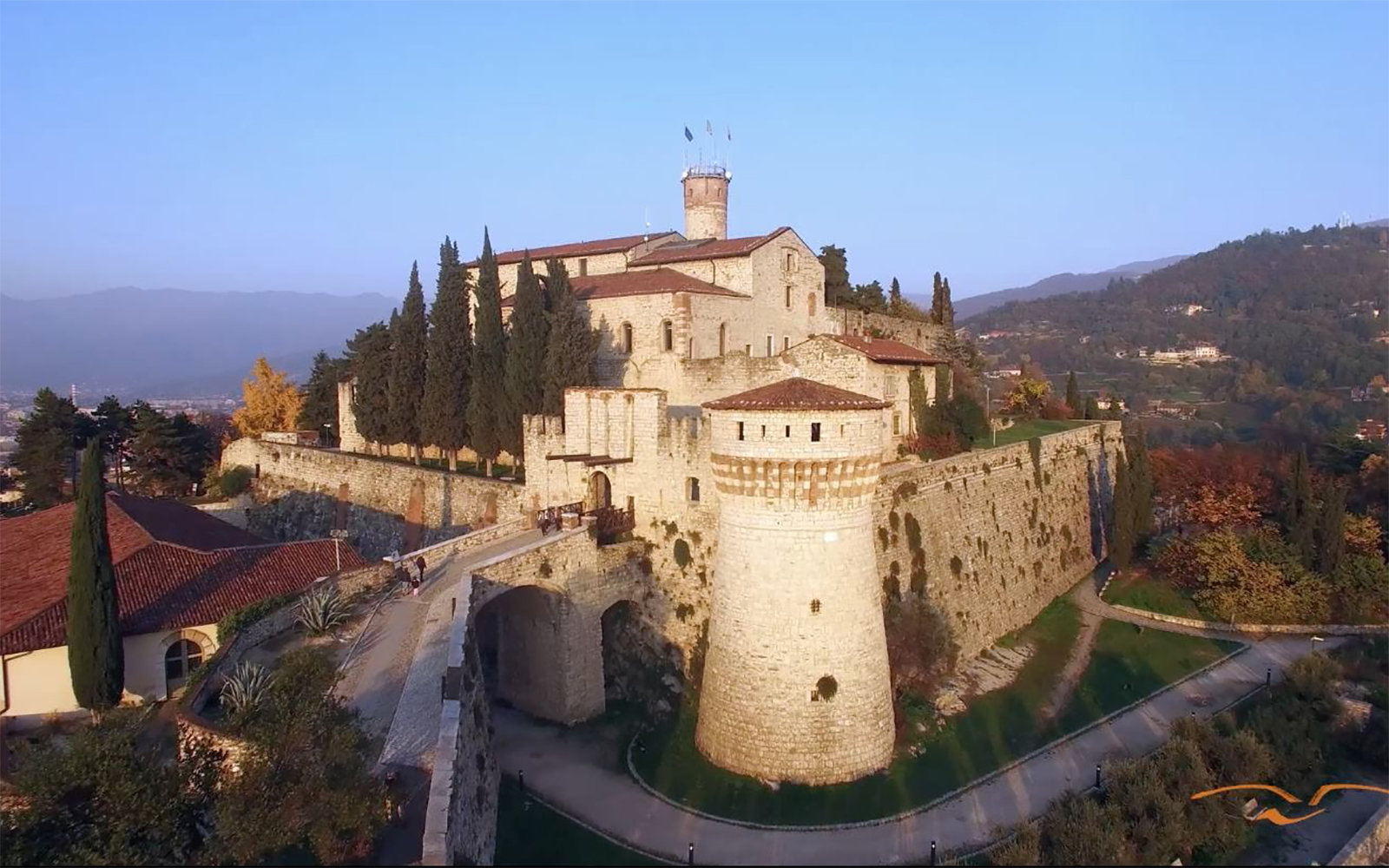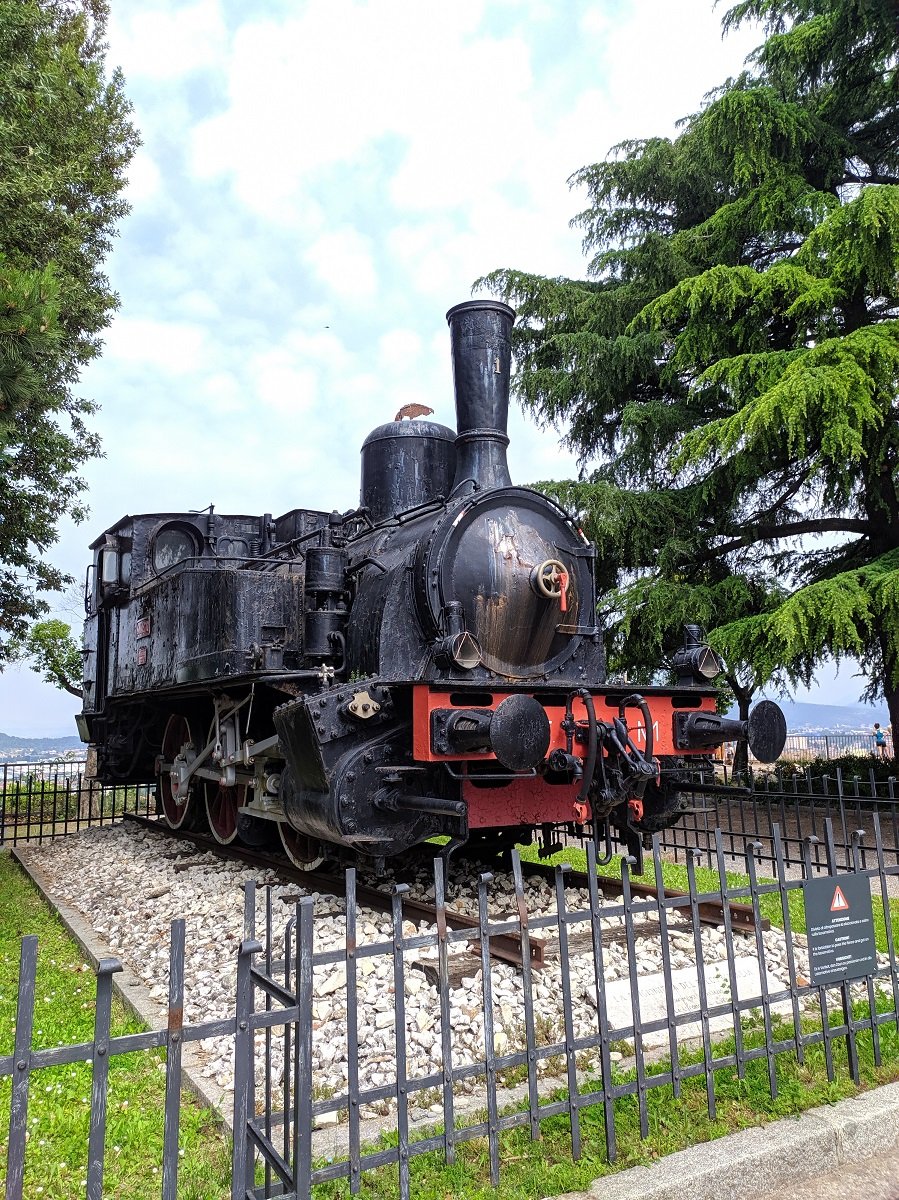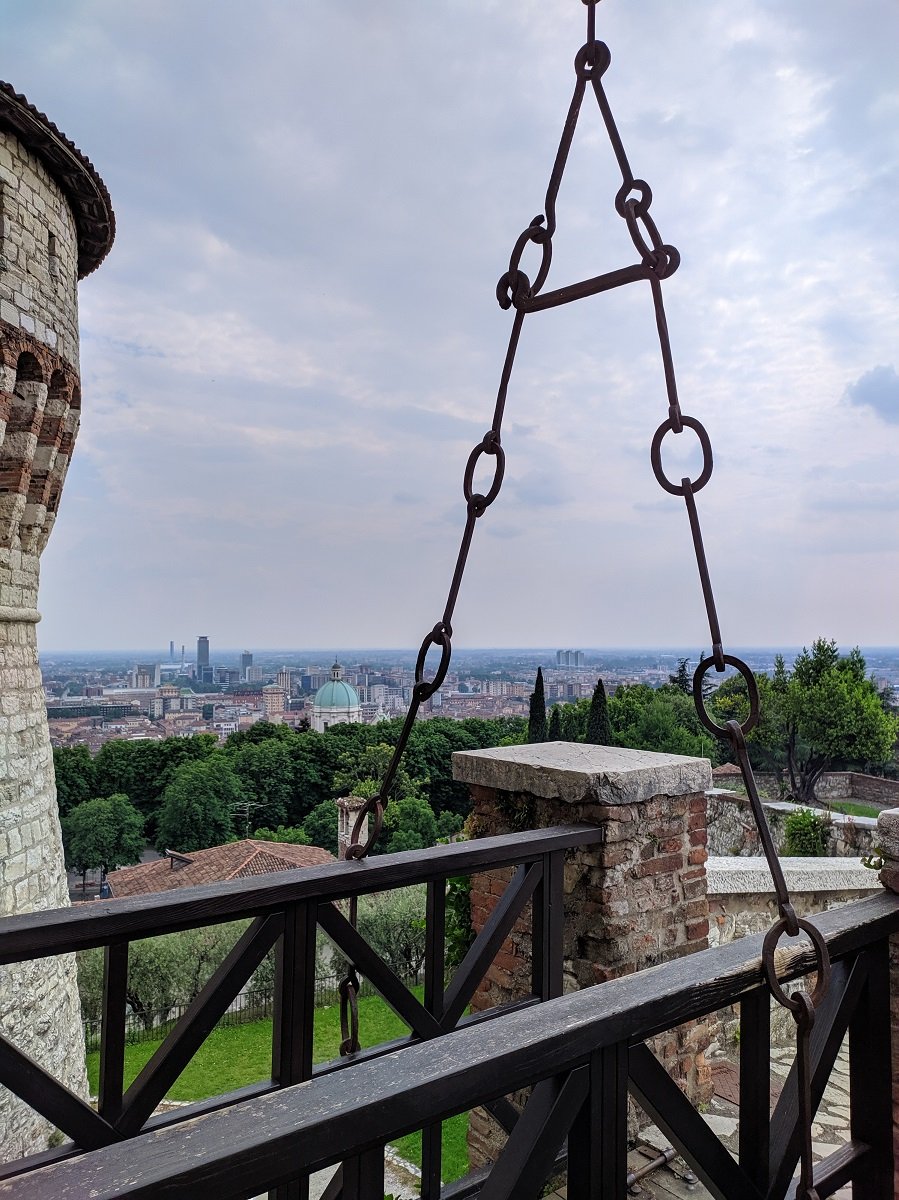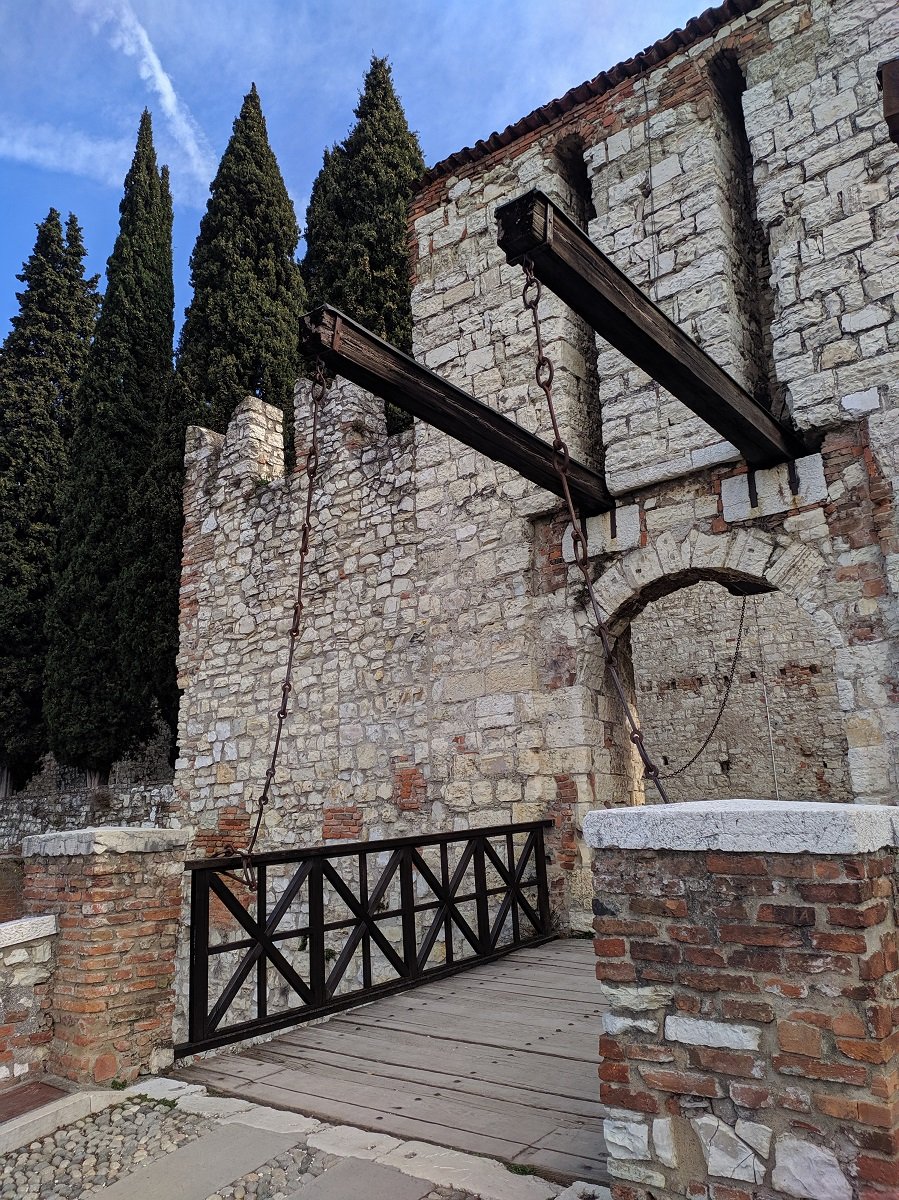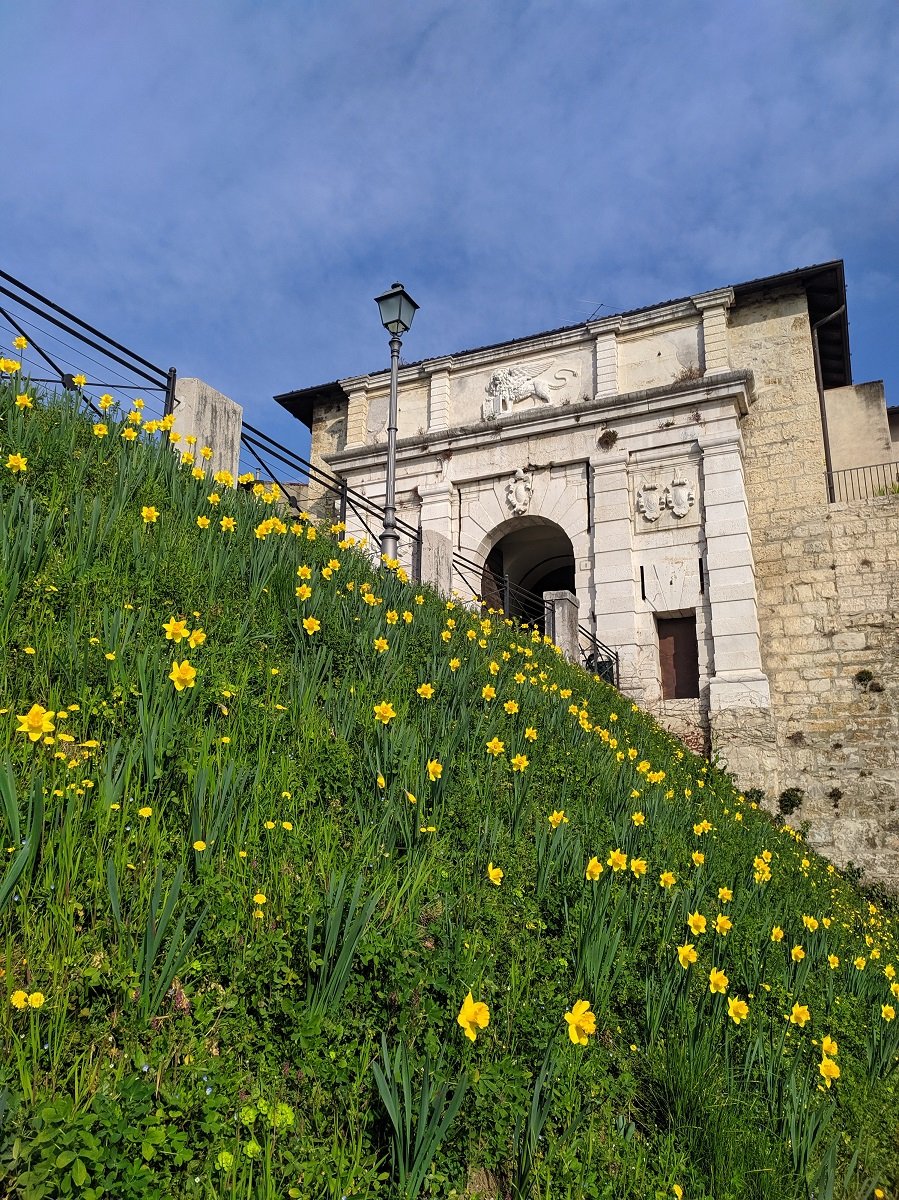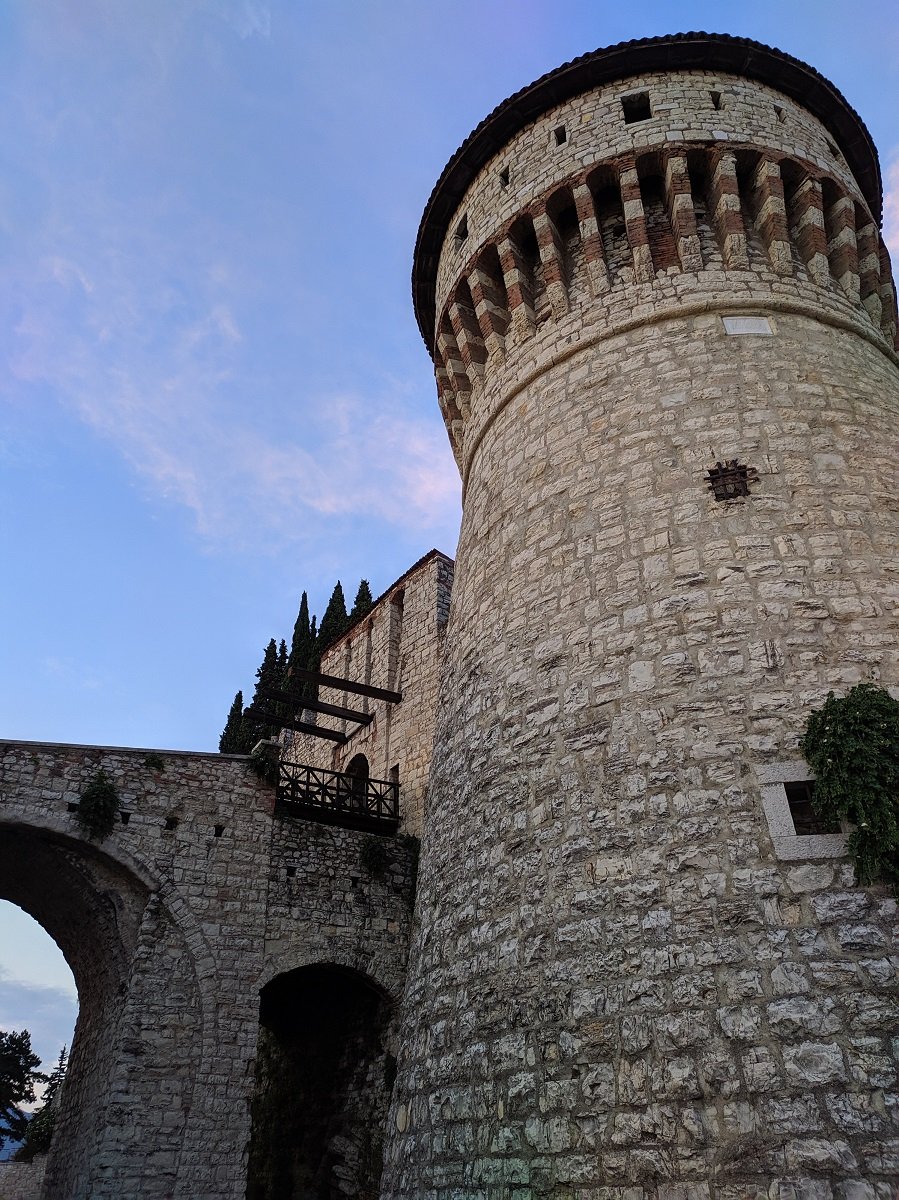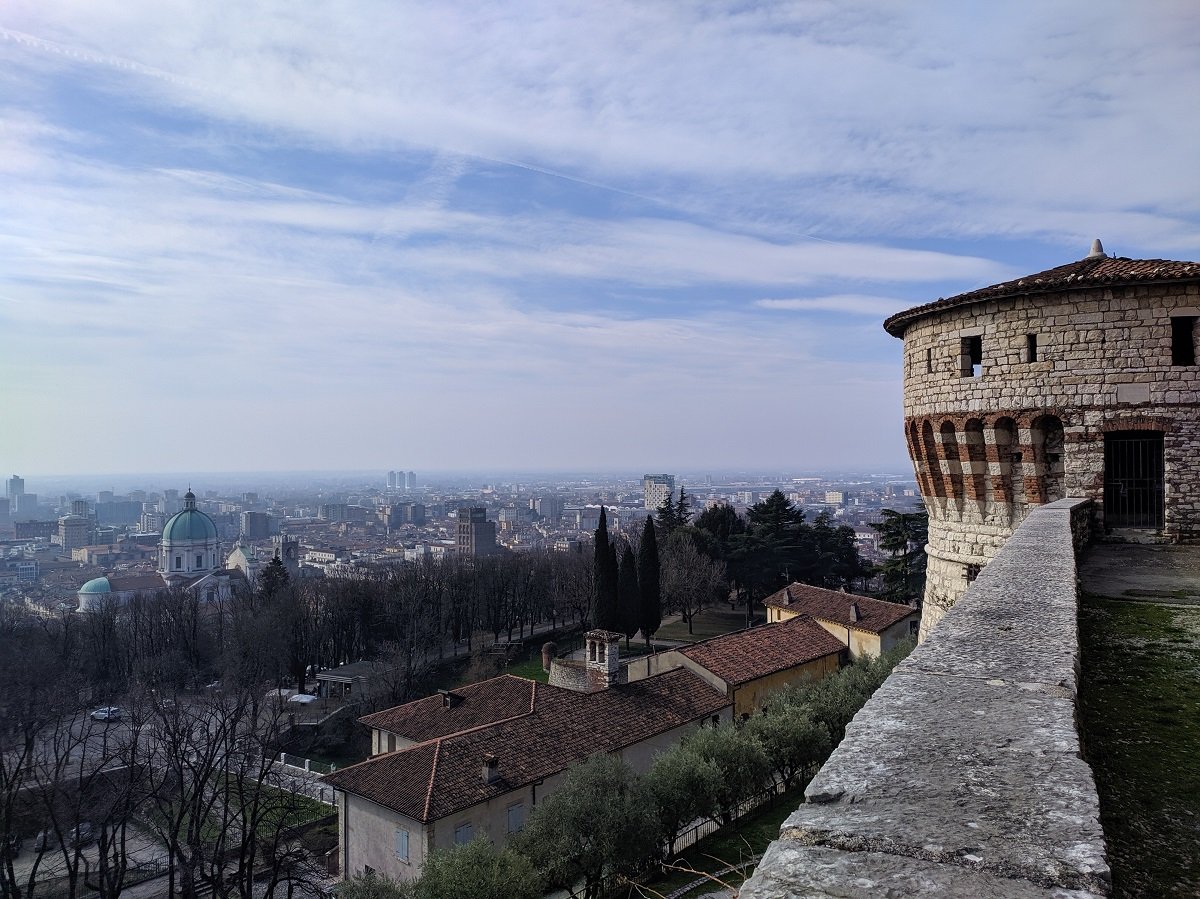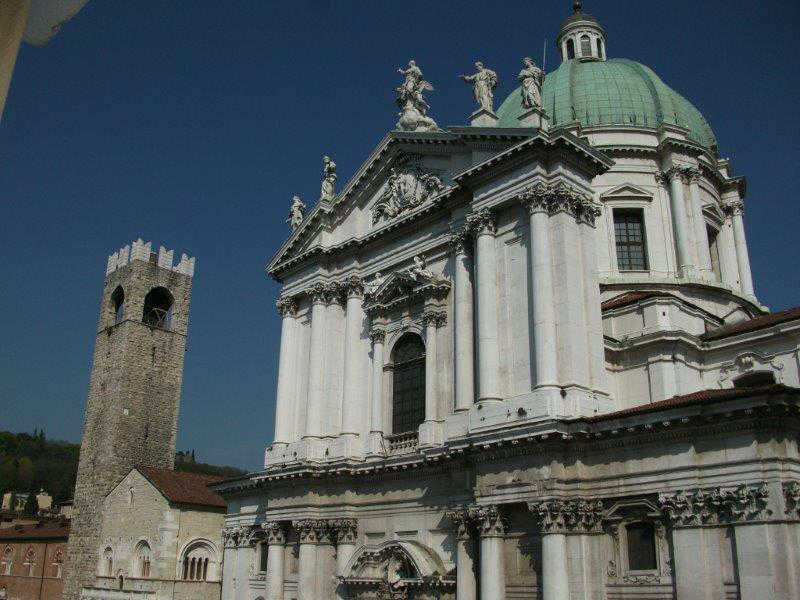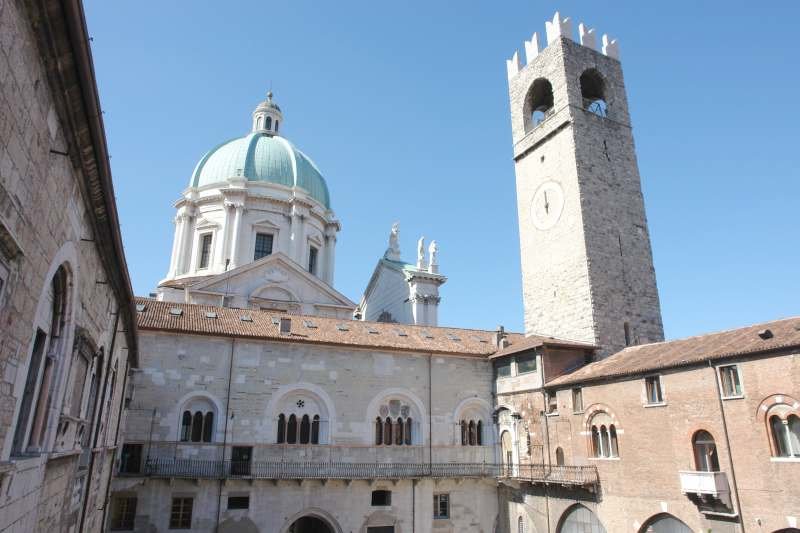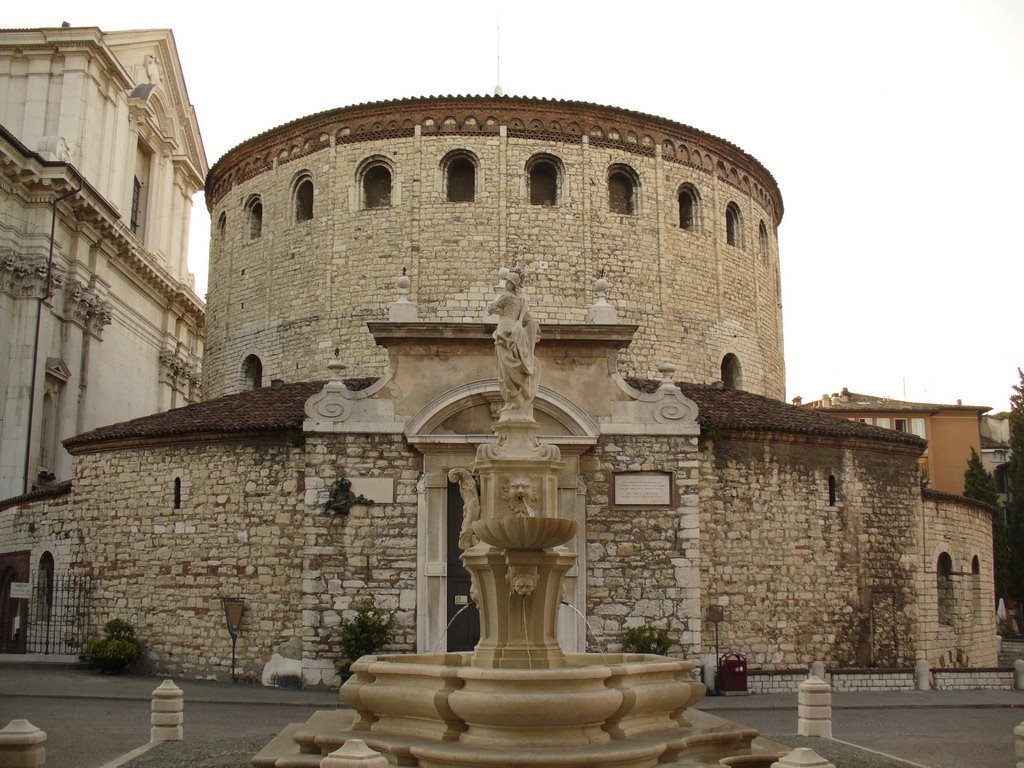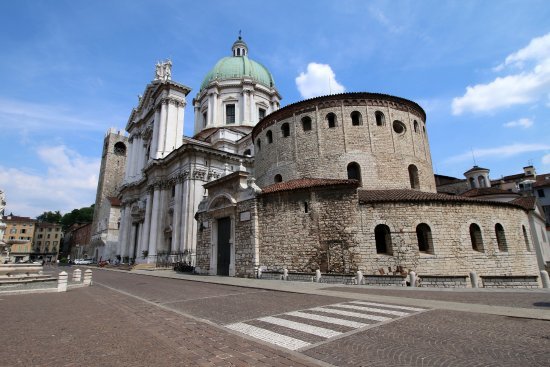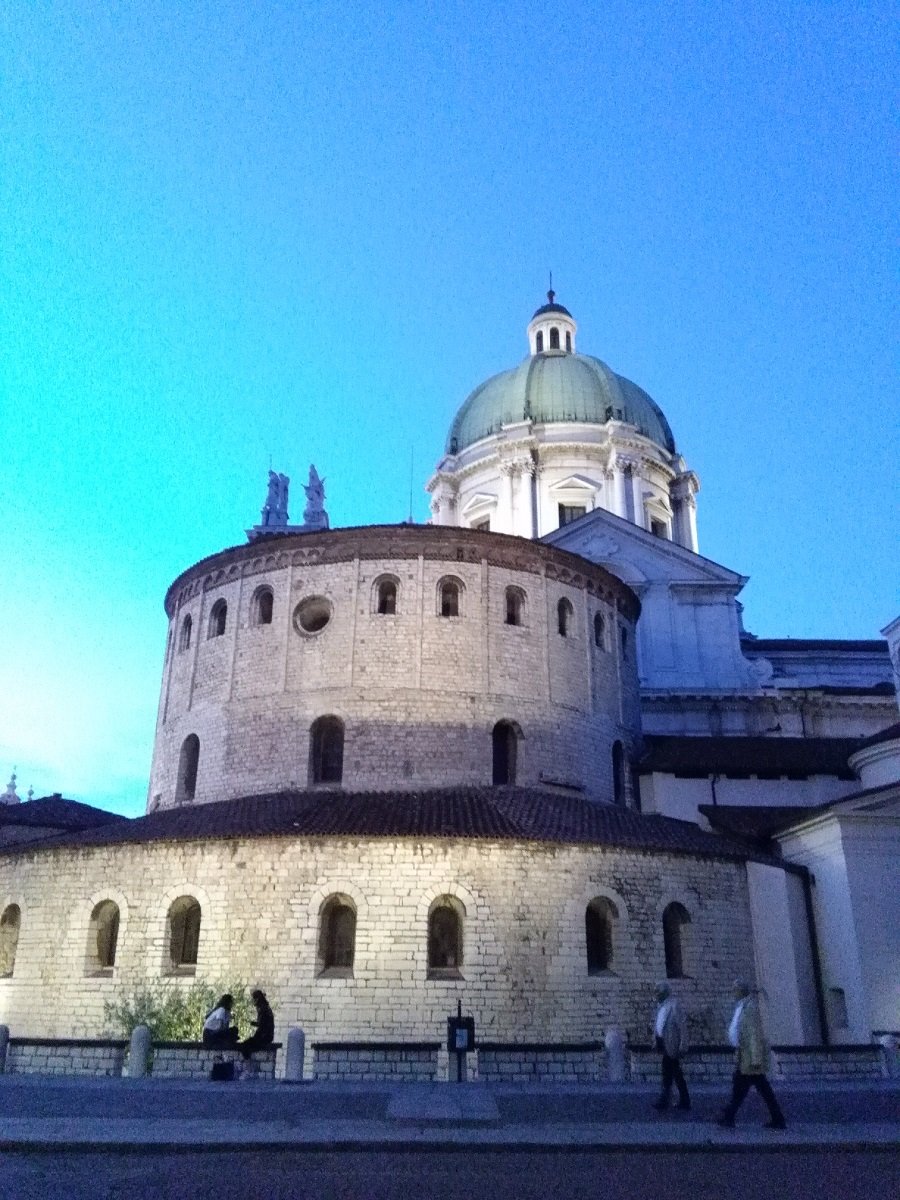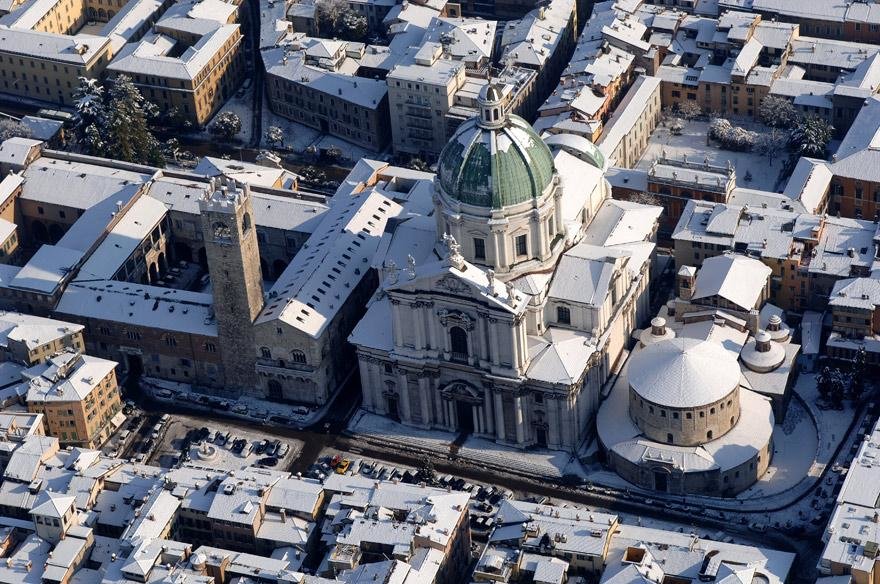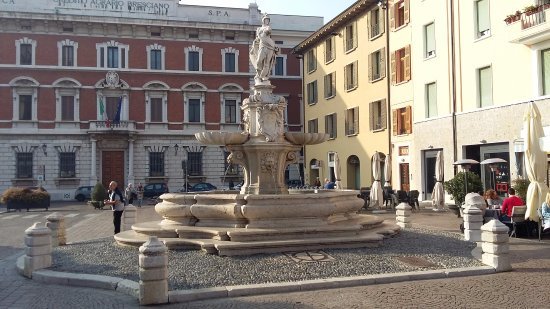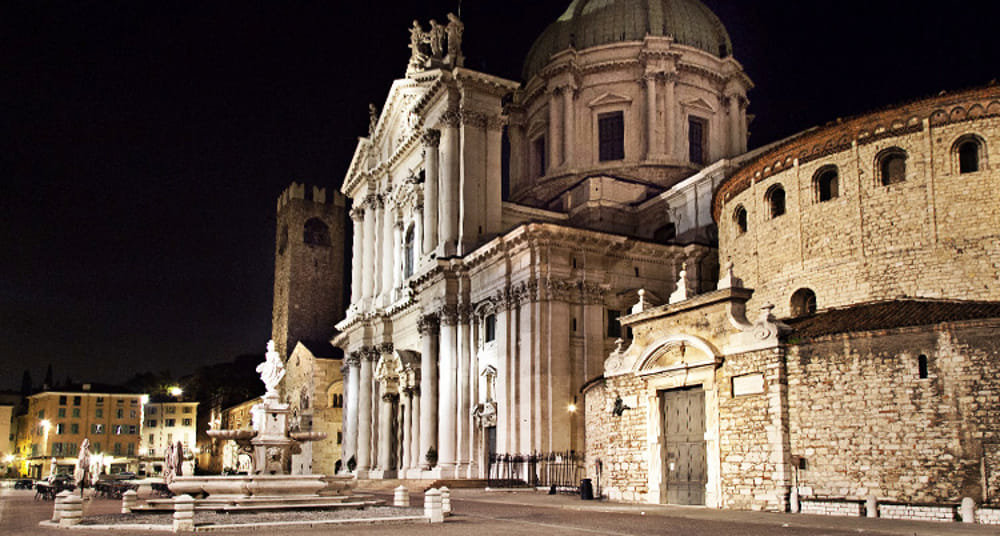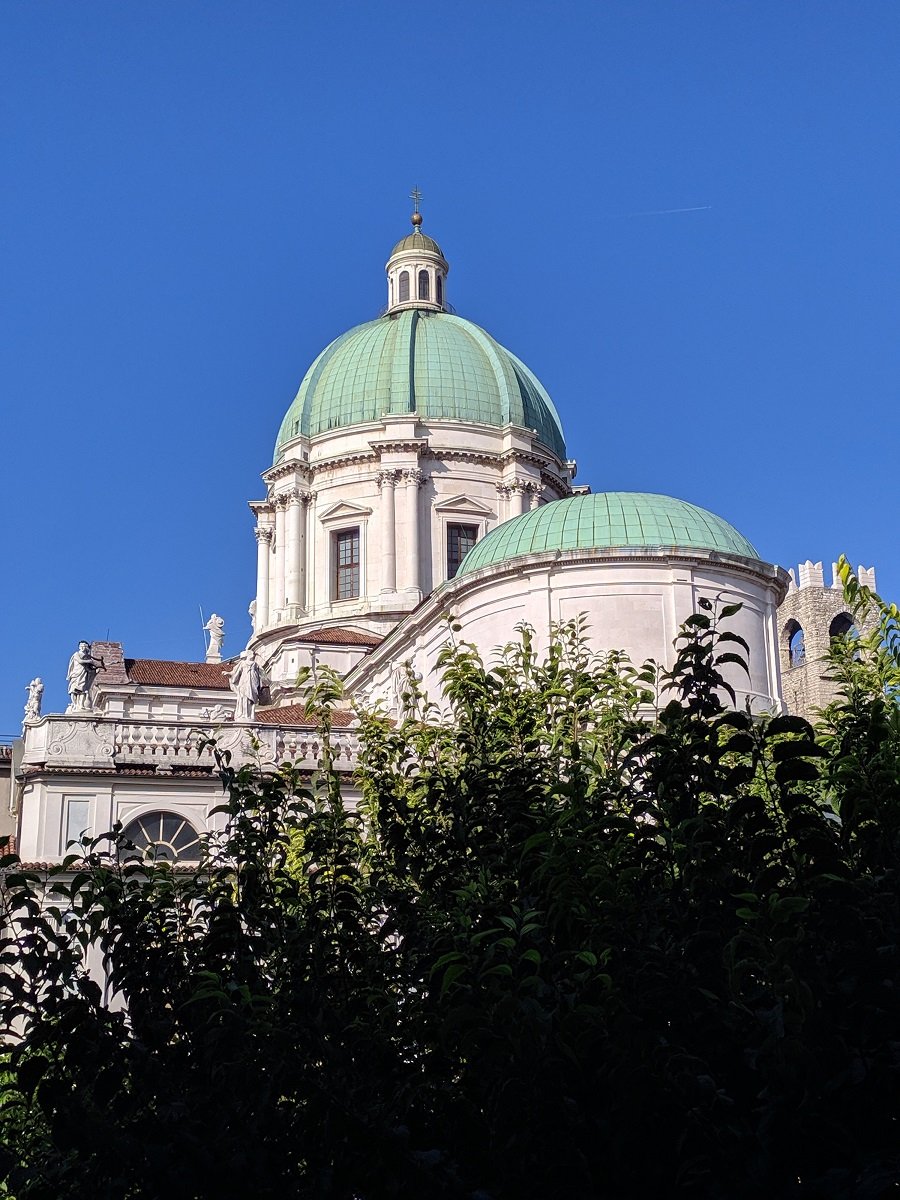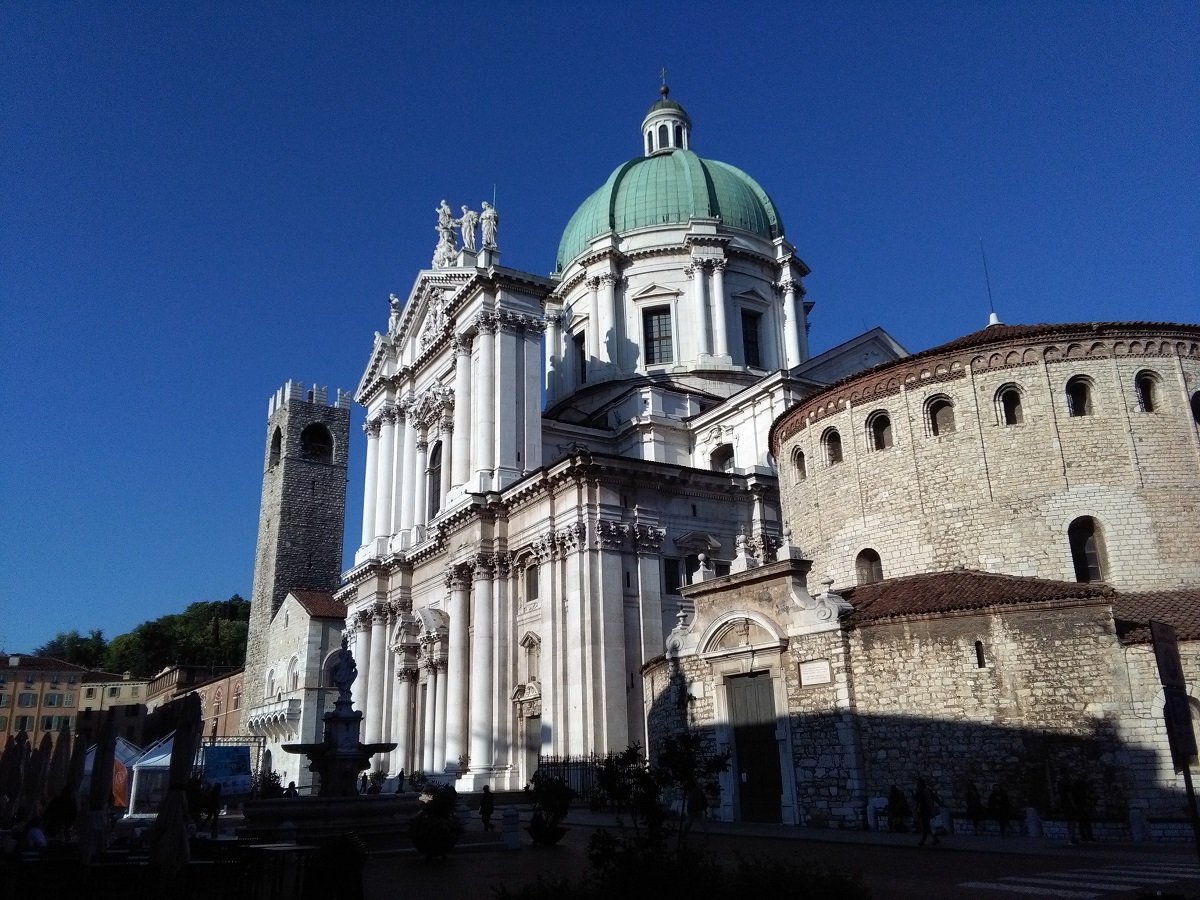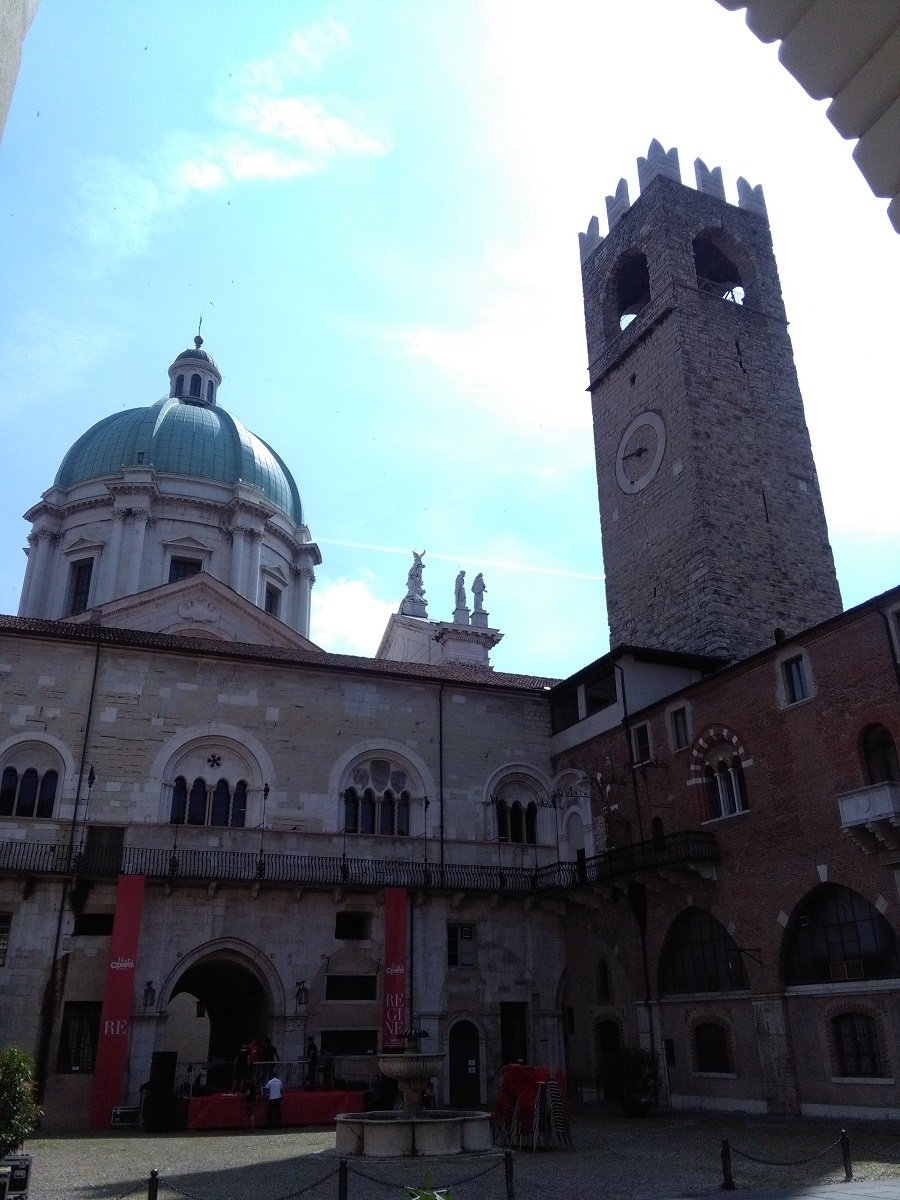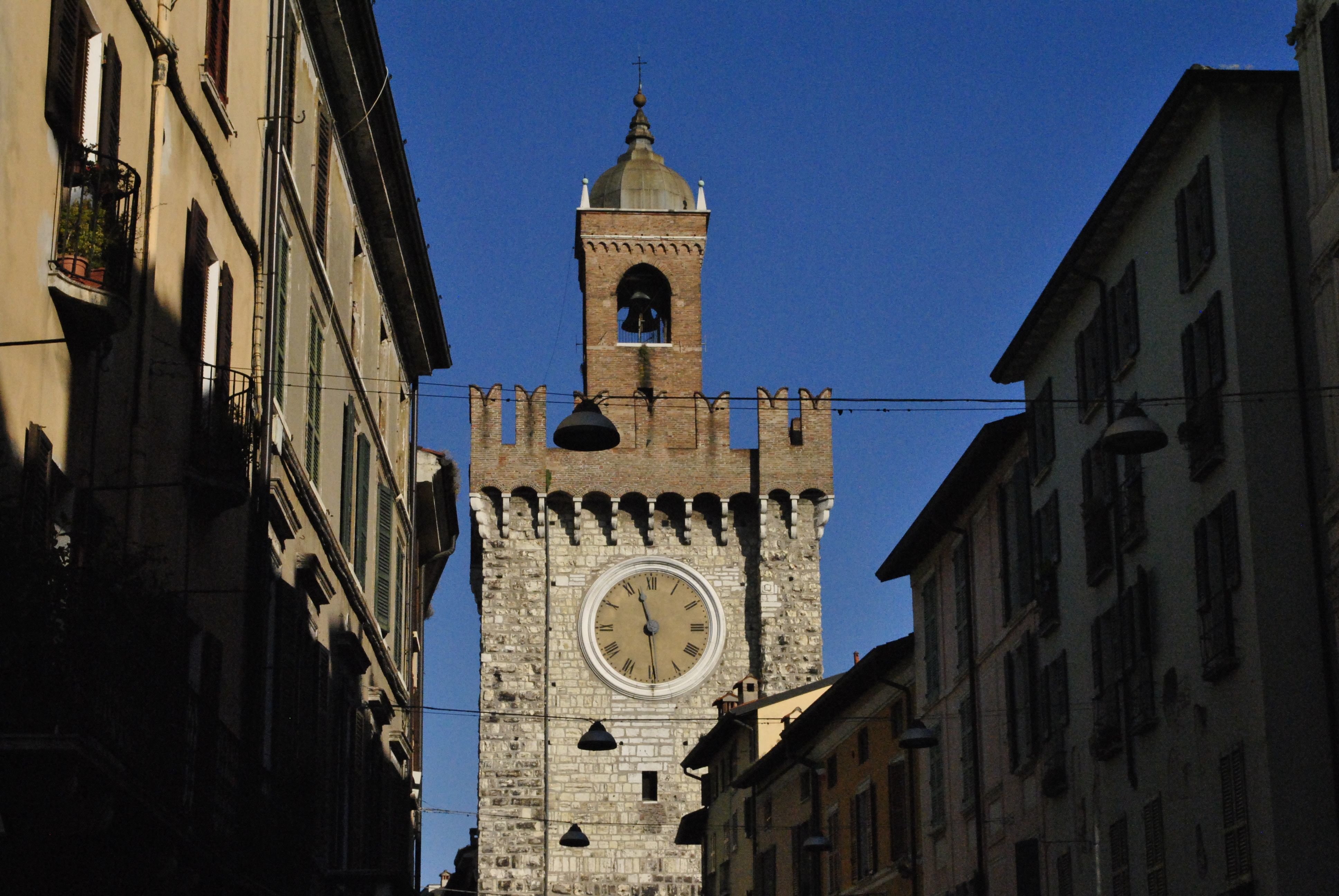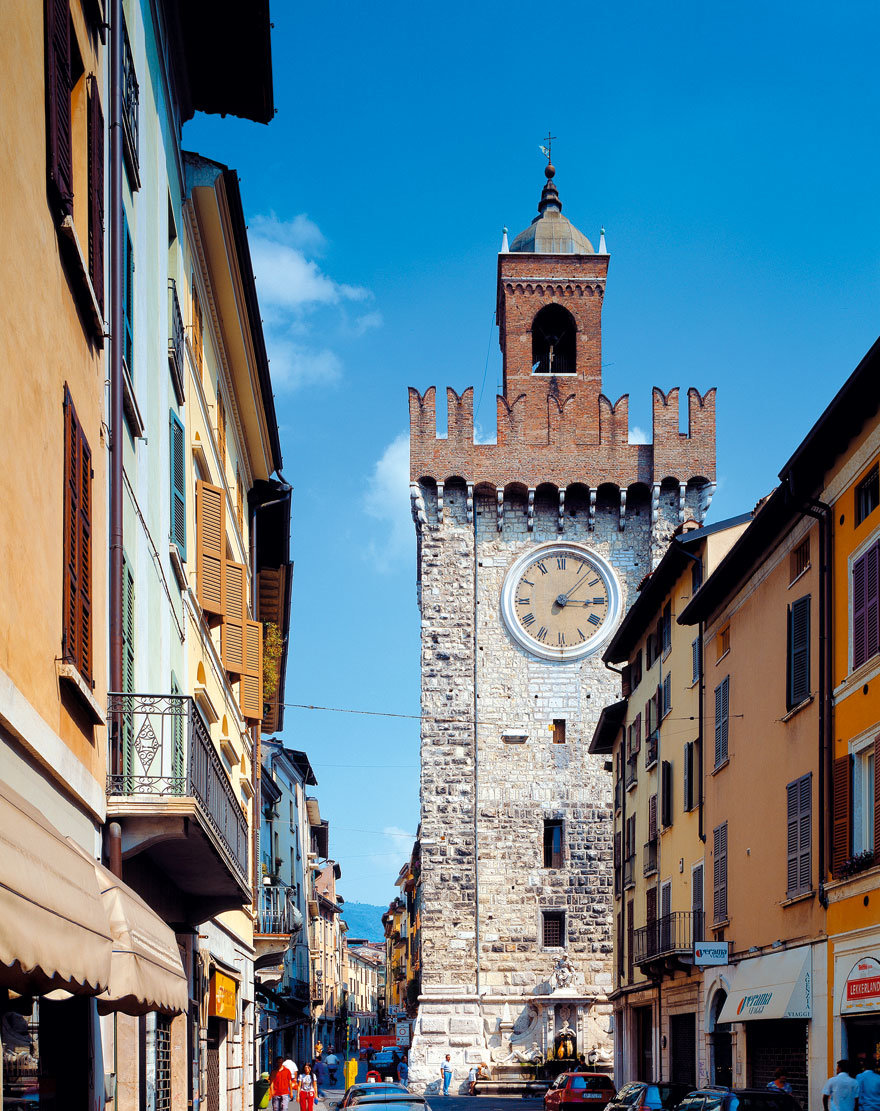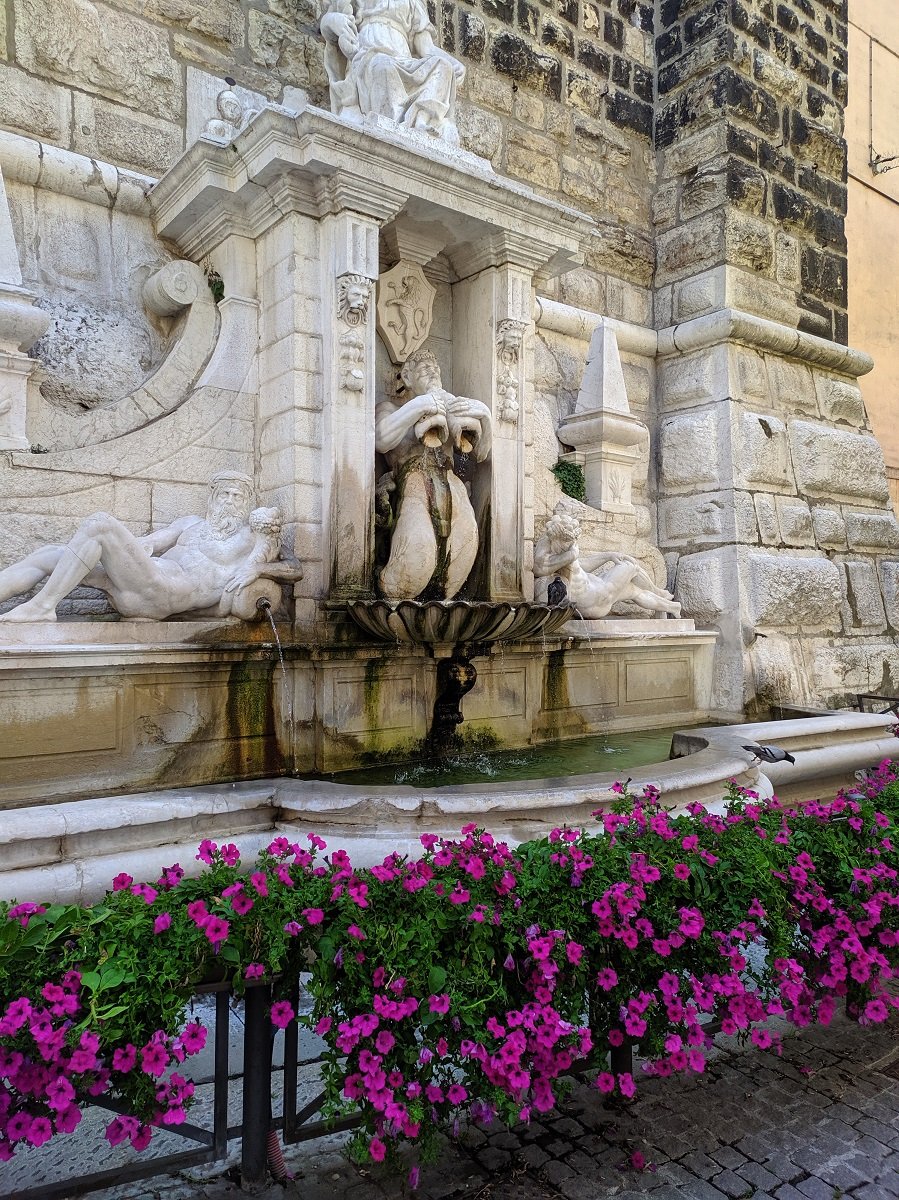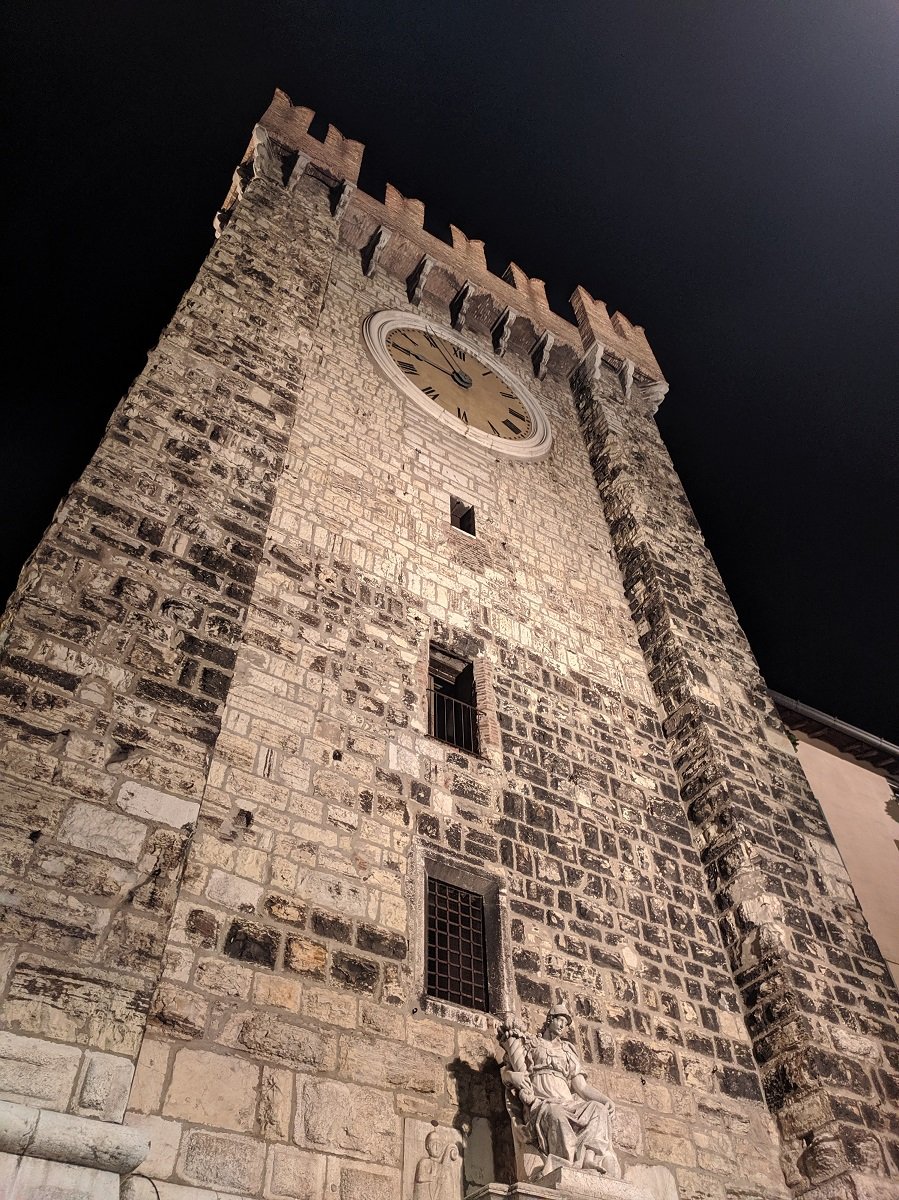Already towards the end of the nineteenth century the city had urbanised new areas for residential and industrial purposes, then, in the first fifteen years of the twentieth century, the population of Brescia increased enormously and by the end of the 1920s had reached 100,000. So the city went on growing, often due to private enterprise, without any new town planning to regulate the development of areas to the south and west of the town. The speculative nature of these developments and the capitalistic appropriation of these areas connote the new districts which grew up in the wake of industrial expansion. Historicity and eclecticism were the salient characteristics of new buildings in the town centre. Even the most important constructions, designed by famous building firms which were operating until the end of the 1930s, were not the work of architects with original ideas, as happened in other cities in Lombardy, architects who could give the distinctive style of the period to an edifice, in fact not even the Art Nouveau movement impinged on the dignified, but not artistic, eclecticism of this predominating trend.
On the other hand Brescia became an example for other cities to follow as regards the demolition and rebuilding carried out in line with fascist town planning policies. With the demolition of a picturesque medieval district to make way for Piazza della Vittoria, inaugurated in 1932, the historic structure of the city was disturbed, even if the square remains one of the best examples of urban reconstruction by the architect Marcello Piacentini. Nowadays this is the square where every year in May there is the checkpoint for cars taking part in the Mille Miglia, the spectacular evocation of the most wonderful race in the world, which only sports cars produced in the years between 1927 and 1957 can take part in.
The Second World War caused a lot of damage to the city, but postwar Brescia expanded in every direction and the population reached the present-day number of 200,000. Public works of great importance were undertaken in those years and changed the course of redevelopment of urban areas; to mention just a few: the opening of the tunnel under Mount Cidneo, the continuation of the road to the north towards the new hospital, the road up the Ronchi, the Kennedy flyover passing over the railway, which has encouraged the development of the new district: Brescia 2, an area characterised by original examples of contemporary architecture.
As a result of war damage to buildings and the lack of any serious town planning (the first proper town development plan dates back to 1961) demolition and rebuilding were carried out that altered the traditional appearance of the town. It was only at the beginning of the 1970s that the town council changed its policy. The period of expansion was over and the new 1971 plan proposed to improve the quality of the existing city fabric by rendering it fitter to live in. To this end an intelligent plan for the preservation and restoration of the old city centre was approved and put into practice This plan has borne fruit and many districts have been lovingly restored. The most important works concentrated on the Carmine district, the restoration of the Castle, the building of the new law courts and the restoration of the conventual complex of San Salvatore-Santa Giulia, where the City Museum was inaugurated in 1999; an example of collaboration between the Town Council and private enterprise, which has led to the creation of one the largest exhibitions of any museum in Italy.
In 1975 the district of San Polo Nuovo was built to provide accommodation for 18,000 people in terrace houses and high tower blocks: this was the last example of town planning for an expanding city.
The convent of San Salvatore, later named after Santa Giulia (915) was founded at the wish of King Desiderius and his wife Ansa in 753 AD, and built on a particularly rich archeological site ( the remains of Roman domus have been found under the basilica of San Salvatore and in the kitchen garden of Santa Giulia. Considerable enlargement and reconstruction over the centuries produced a building constructed round three cloisters, as it is today. Major alterations were made in the time of the city states (XII century: rebuilding of the cloisters, enlargement of San Salvatore's crypt, building of Santa Maria in Solario) and in the late XV century ( complete rebuilding of the cloisters and addition of the north cloister of dormitories, raising of the nuns' choir and repositioning of the front of the church of San Salvatore, which was in turn destroyed and completely redesigned when the new church of Santa Giulia was built in 1499).
Brescia Art Gallery, or Pinacoteca, holds a notable collection of artworks by Raphael, Foppa, Savoldo, Moretto, Romanino, Lotto, Ceruti, Hayez, Thorvaldsen, Pelagi, Canella and Canova to name but a few. They are exhibited in 21 rooms reflecting the complex history of the gallery, guiding visitors also on a historical and critical tour that marked its structure from the late 14th century to the beginning of the 19th century.
The temple was built by Vespasian in 74 A.D., as the partly restored dedicatory inscription on the pediment shows. The capitolium site had a terrace on three sides with the temple in the middle and two lateral rows of arcades stretching down towards the Forum. The flight of marble steps, which has been restored and made up with bricks, led up to the podium of the raised pronaos, which is characterised by a hexastyle central porch with Corinthian columns about 11 metres high, which were restored during the nineteenth century reconstruction works.
The ancient part of Brescia, Roman Brixia so-called since the first century BC because of the rocky, hilly ground on which it is built , is bounded to the north-east by Cidneo Hill (245m). Brich was the Celtic word meaning rocky summit, high places. And the hill with its wonderful view over the whole city, has represented the most important element in the town's history from the time of the first settlements in the Bronze age up until the eve of the XX century.
This square, which dates back to the Middle Ages, is the heart of the city; it contains important historical buildings which symbolize the city's concern with civil rights as well as its religious tradition. The palace of Broletto, which incorporates the municipal tower and the loggia delle grida, exteds along the eastern side as well as two cathedrals - the Duomo Nuovo (the New Cathedral) and the Duomo Vecchio (the Old Cathedral). The Palace of the Broletto is the oldest municipal building in the city and was the centre of political life when Brescia was a city-state. It has a square ground plan with an internal courtyard which was built in stages from the Middle Ages up to the XVII century, when an open bossed arcade was added to the north side.
One of the city symbols, the tower was built in 1248 and is rated amongst the Middle Ages most important monuments. Constructed using remains of Roman buildings along the pre-existing medieval walls in order to protect the so called “San Giovanni” door, the tower is 31 meters high and has a 10.6 meters square plan. It carried out the function of municipal treasure storage, rationing warehouse, and prison too. The bell area was added in the XV century, while in the XVI century the fountain in Via Pace was embedded in its base.
